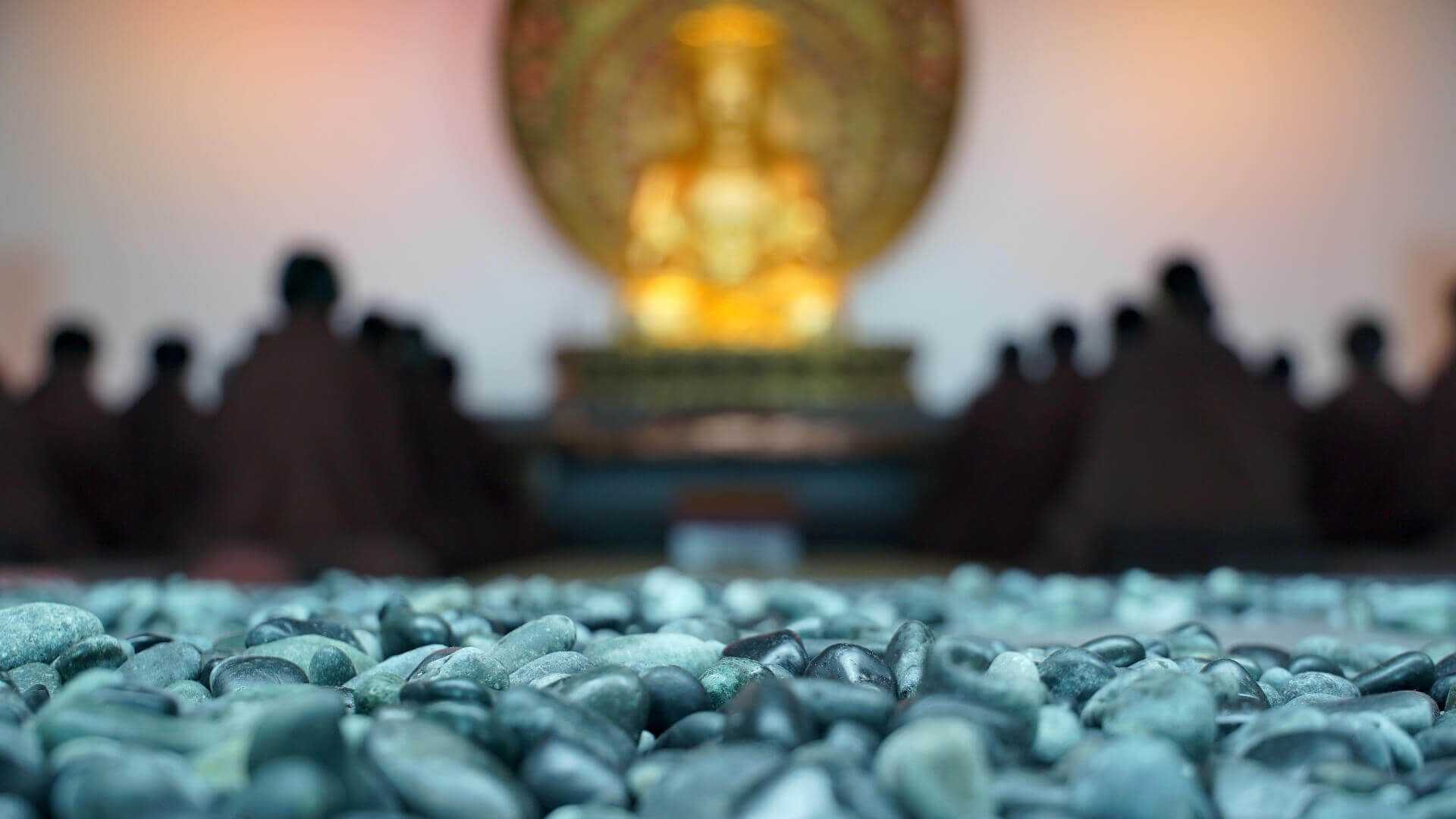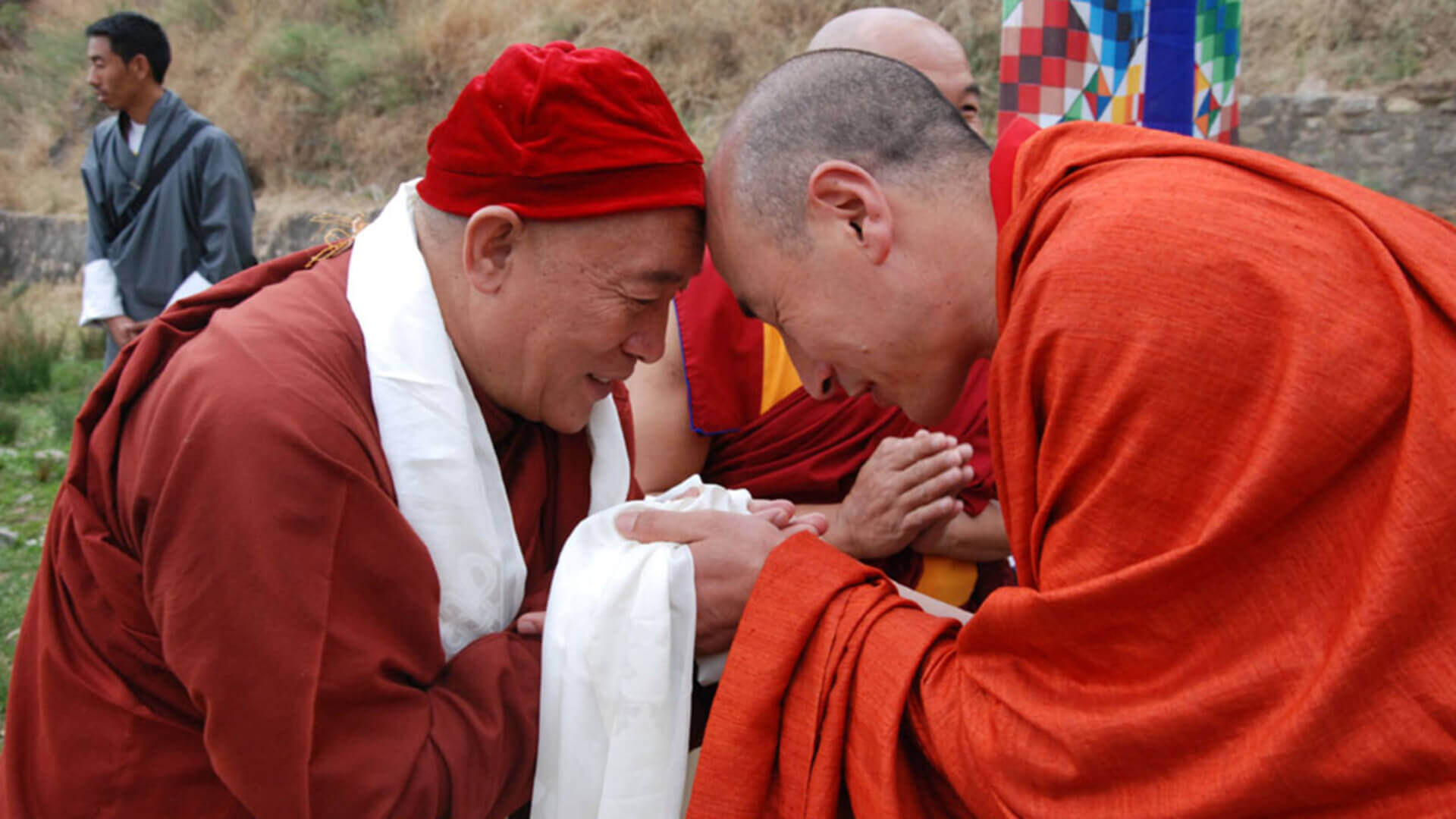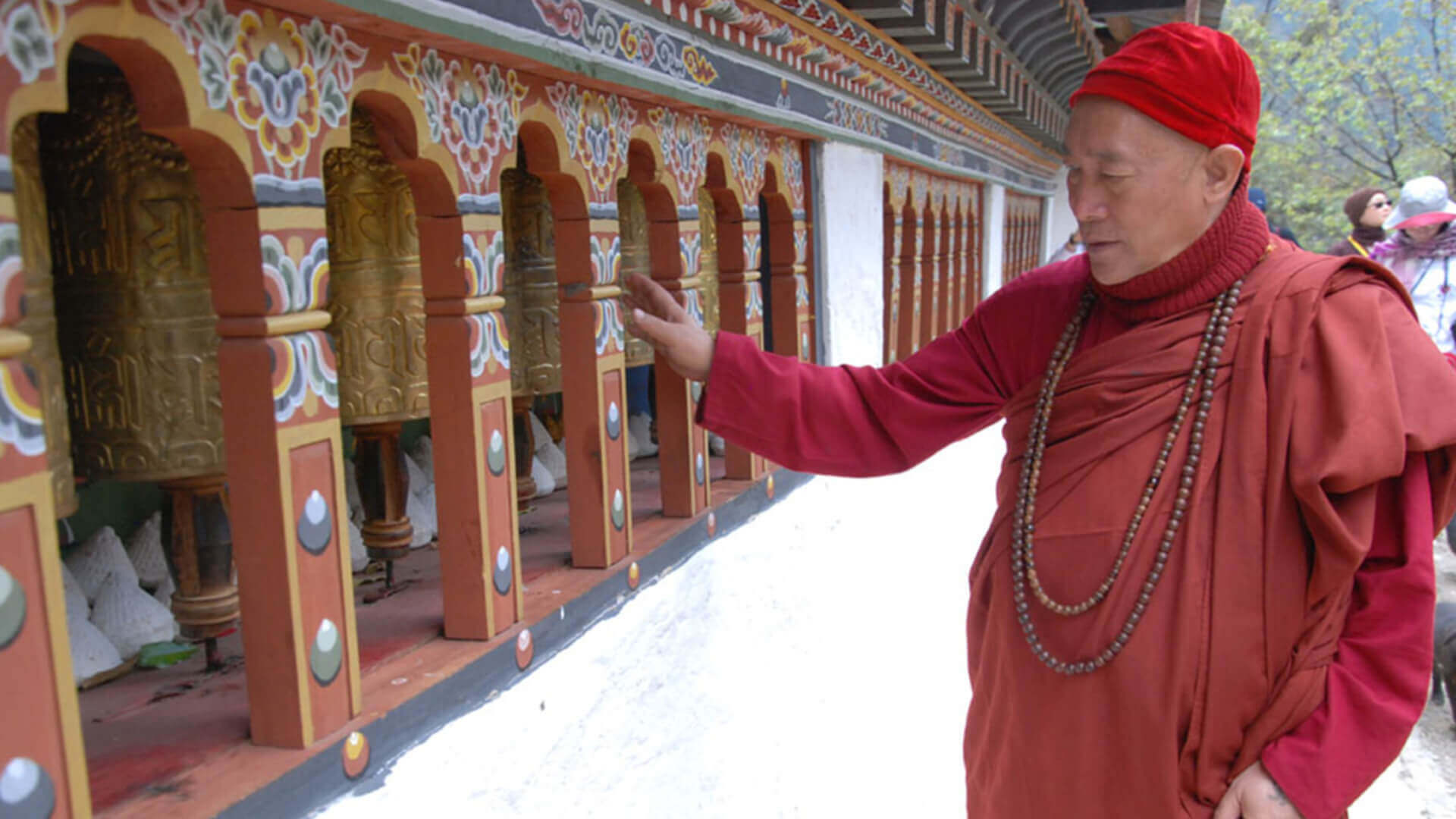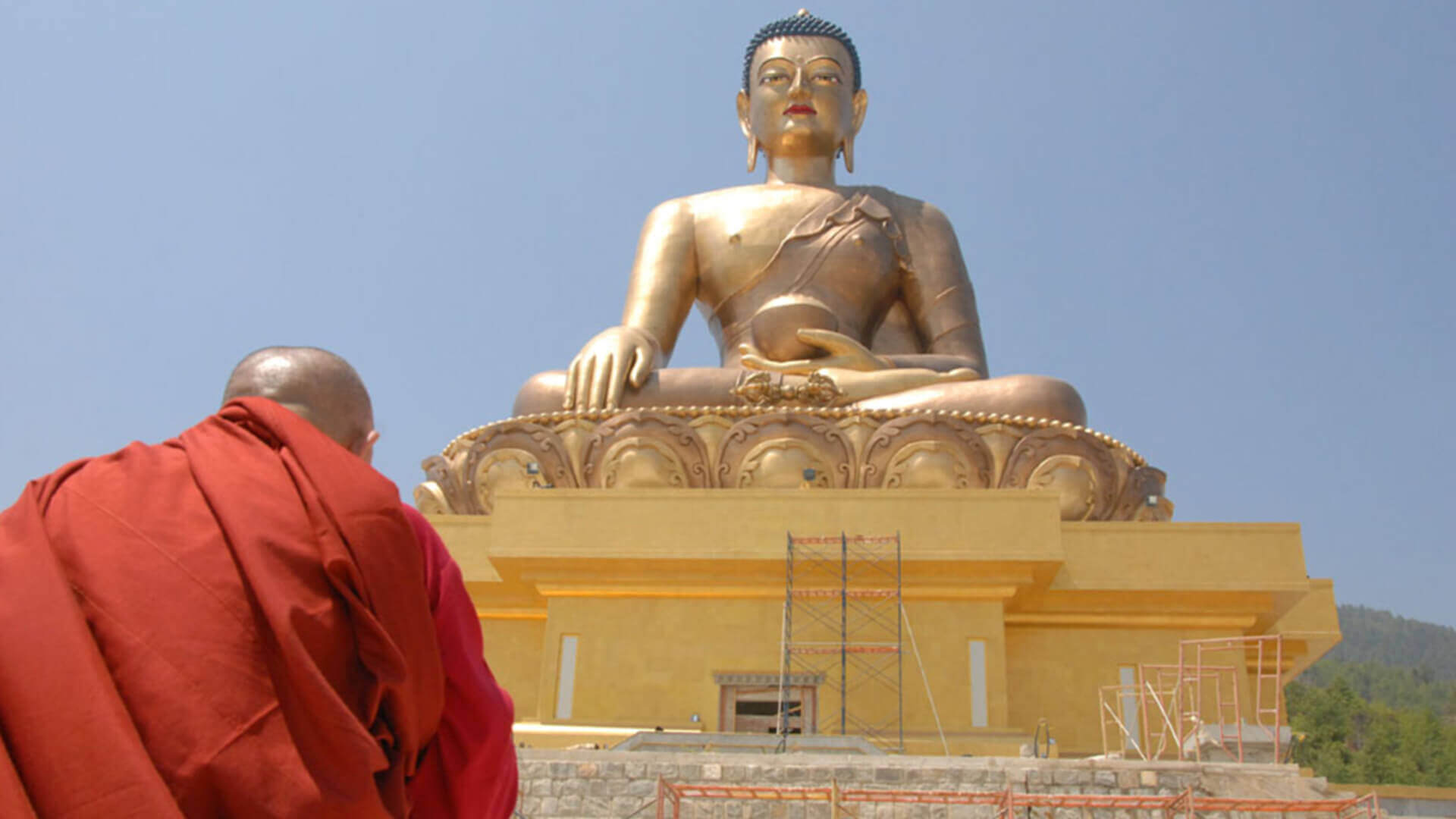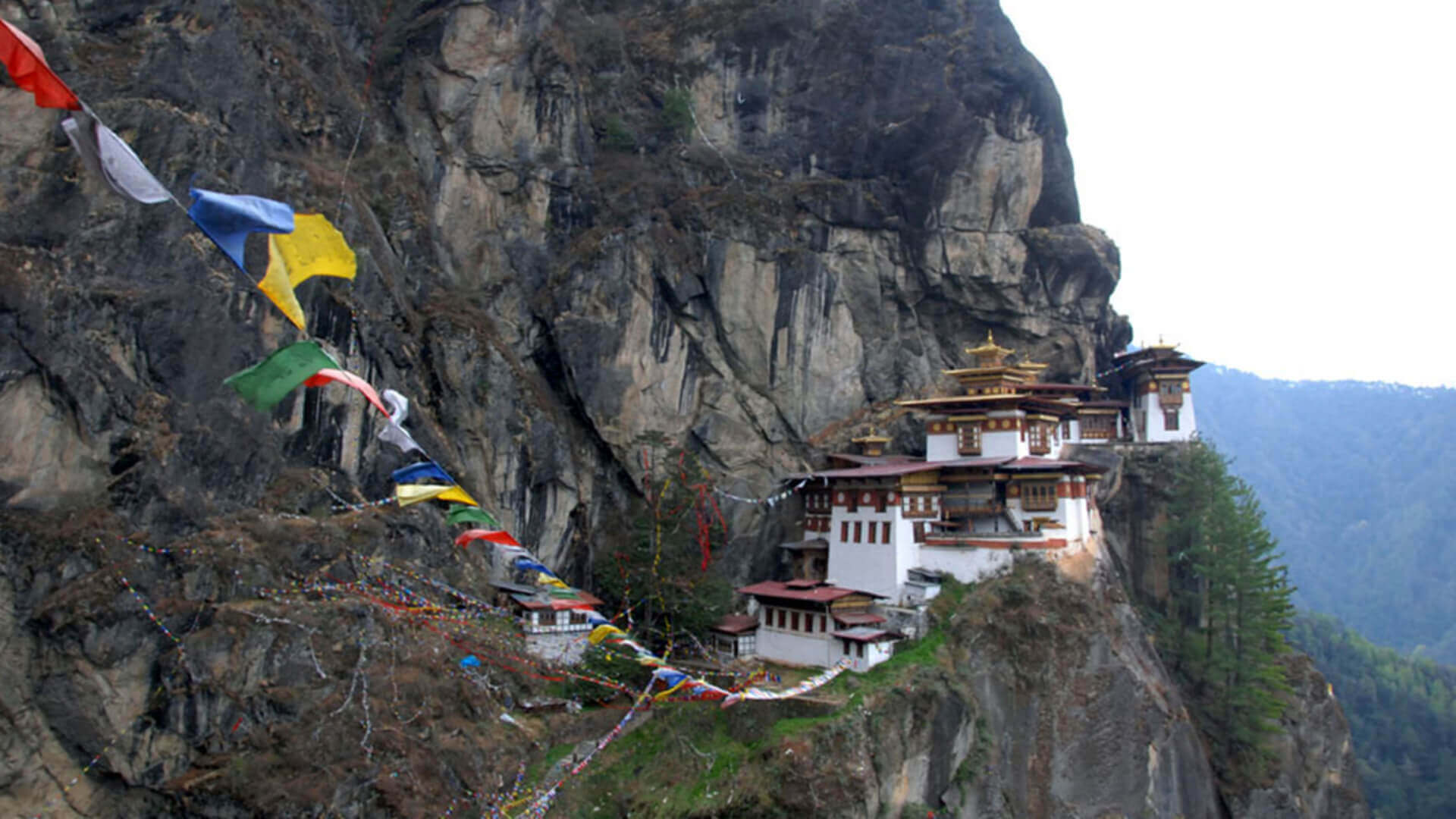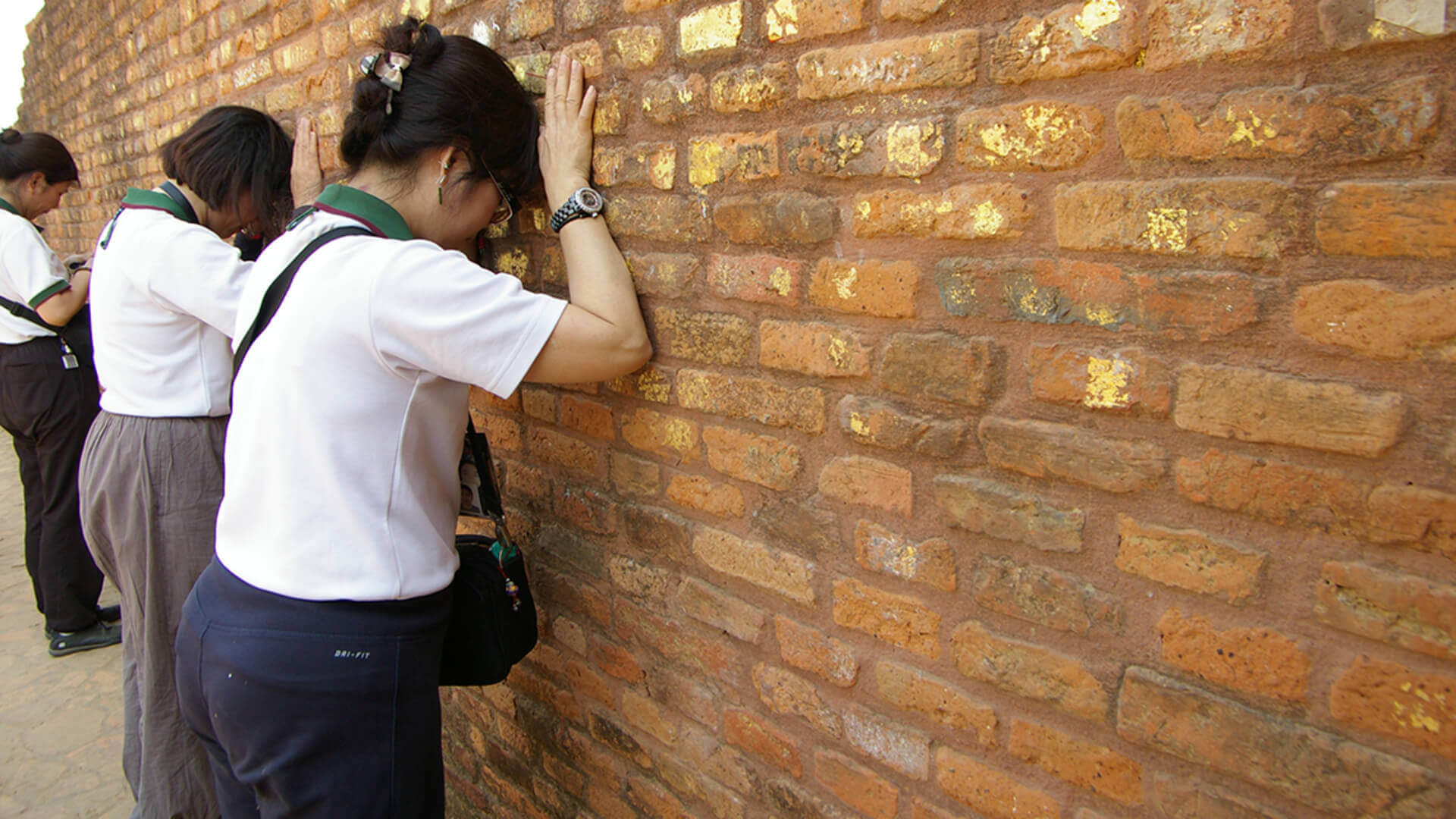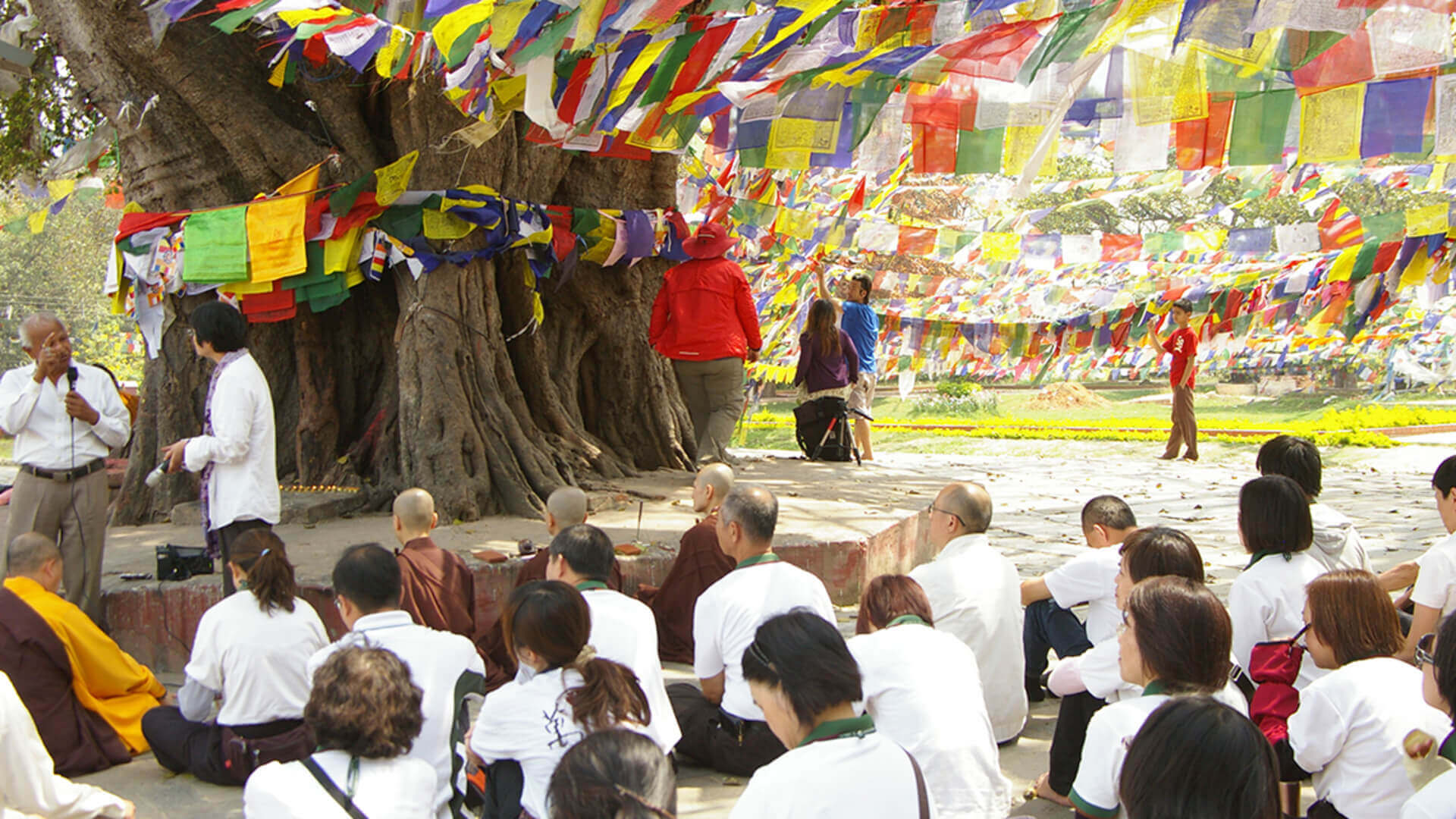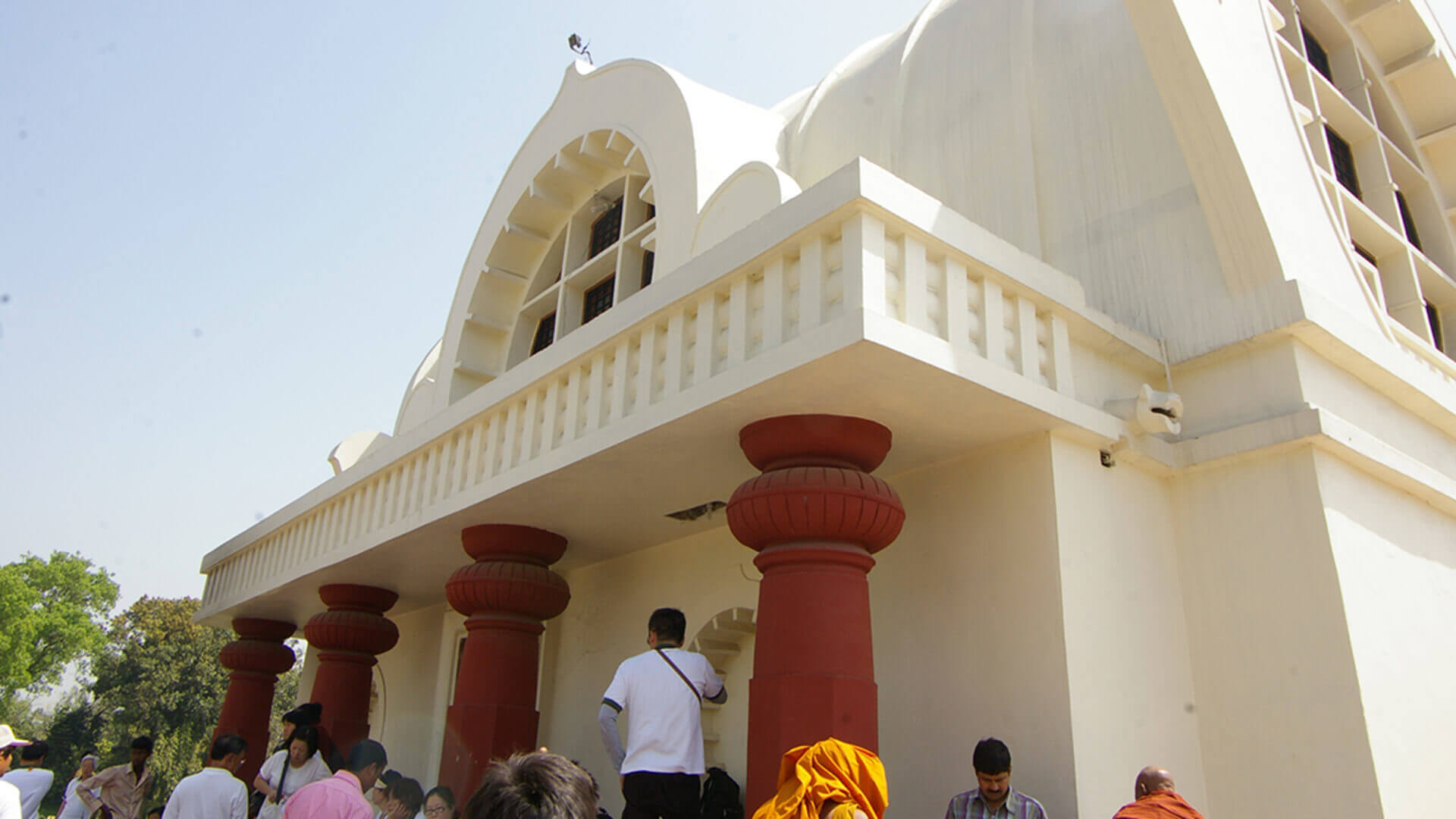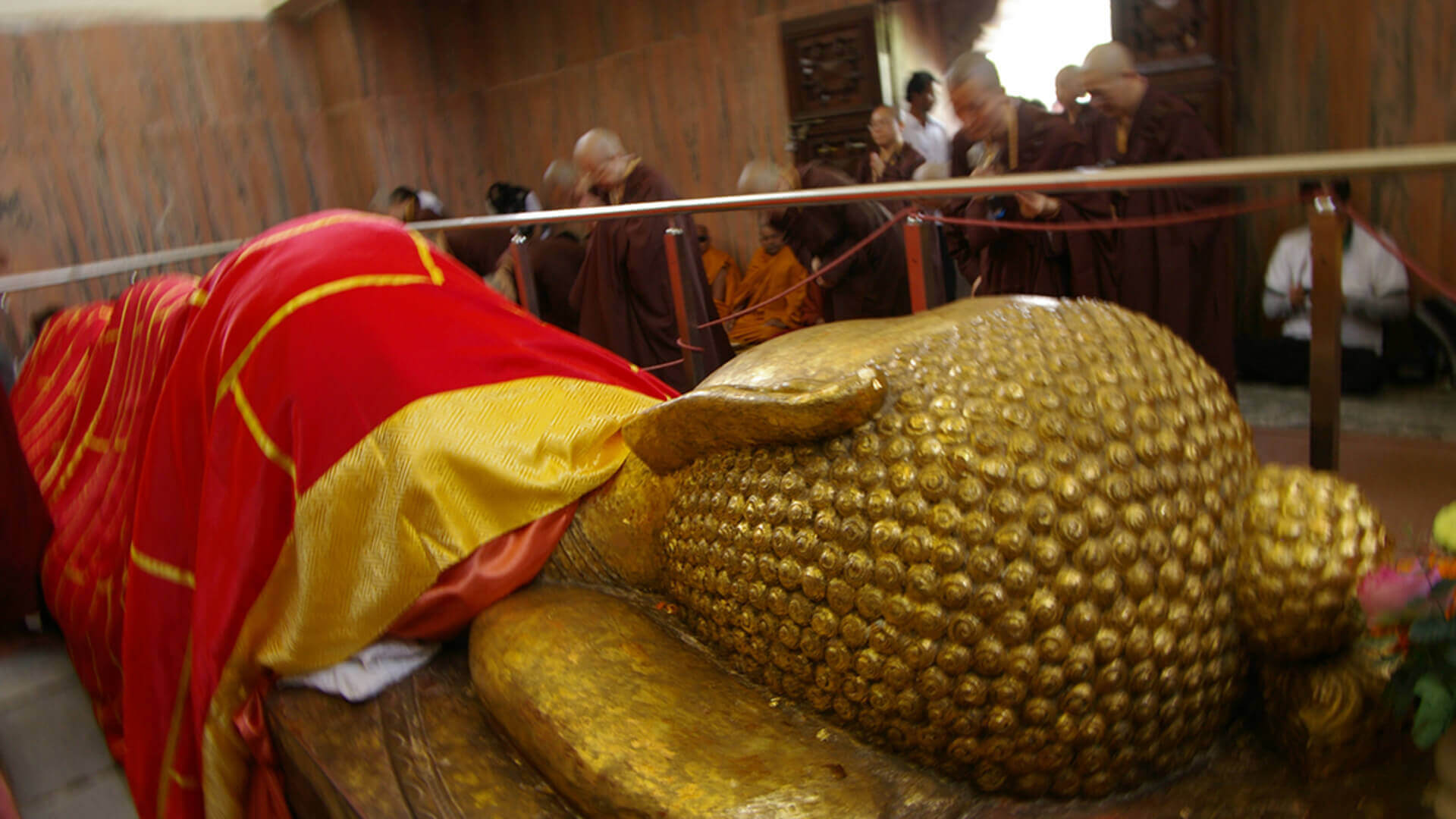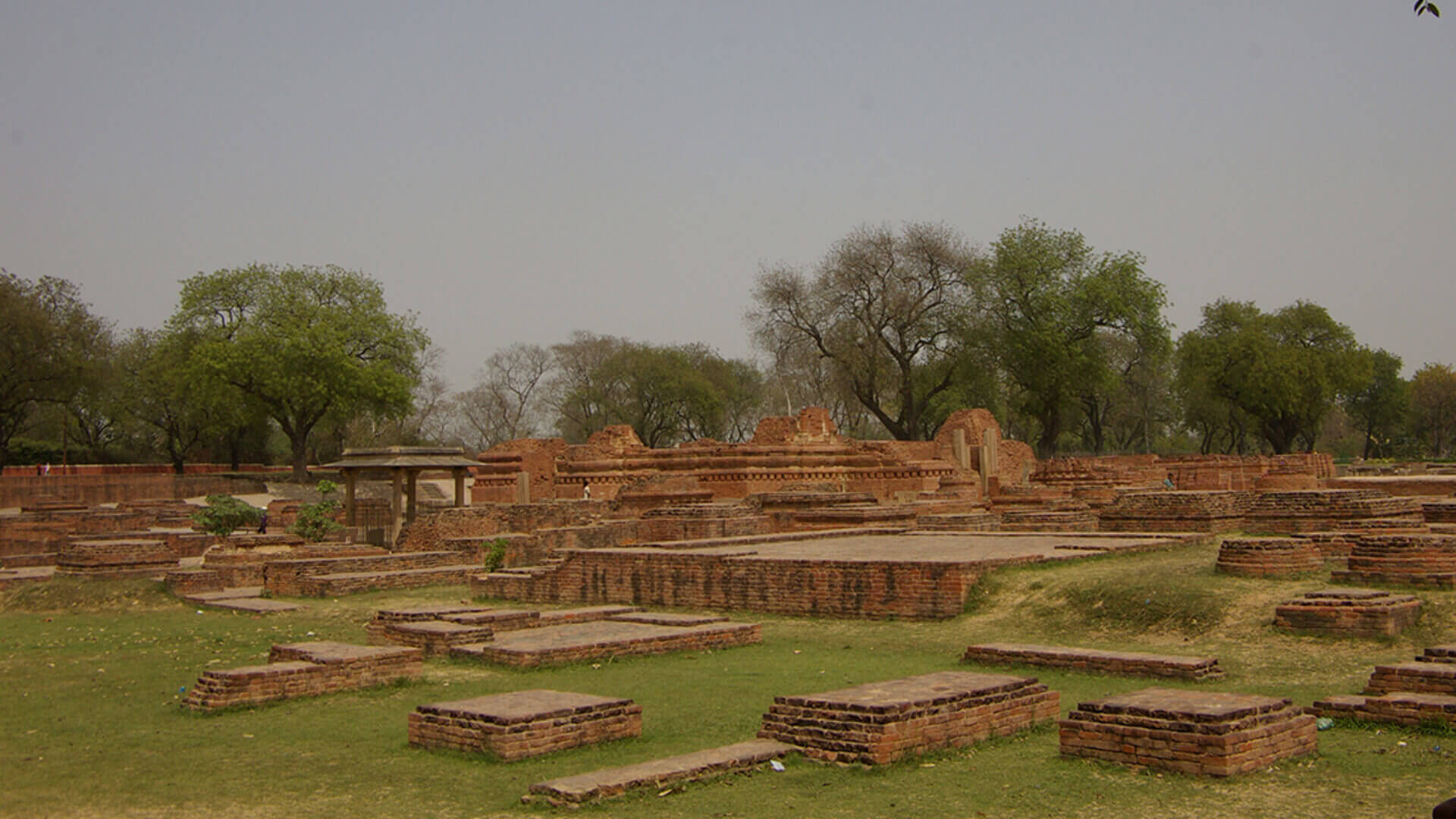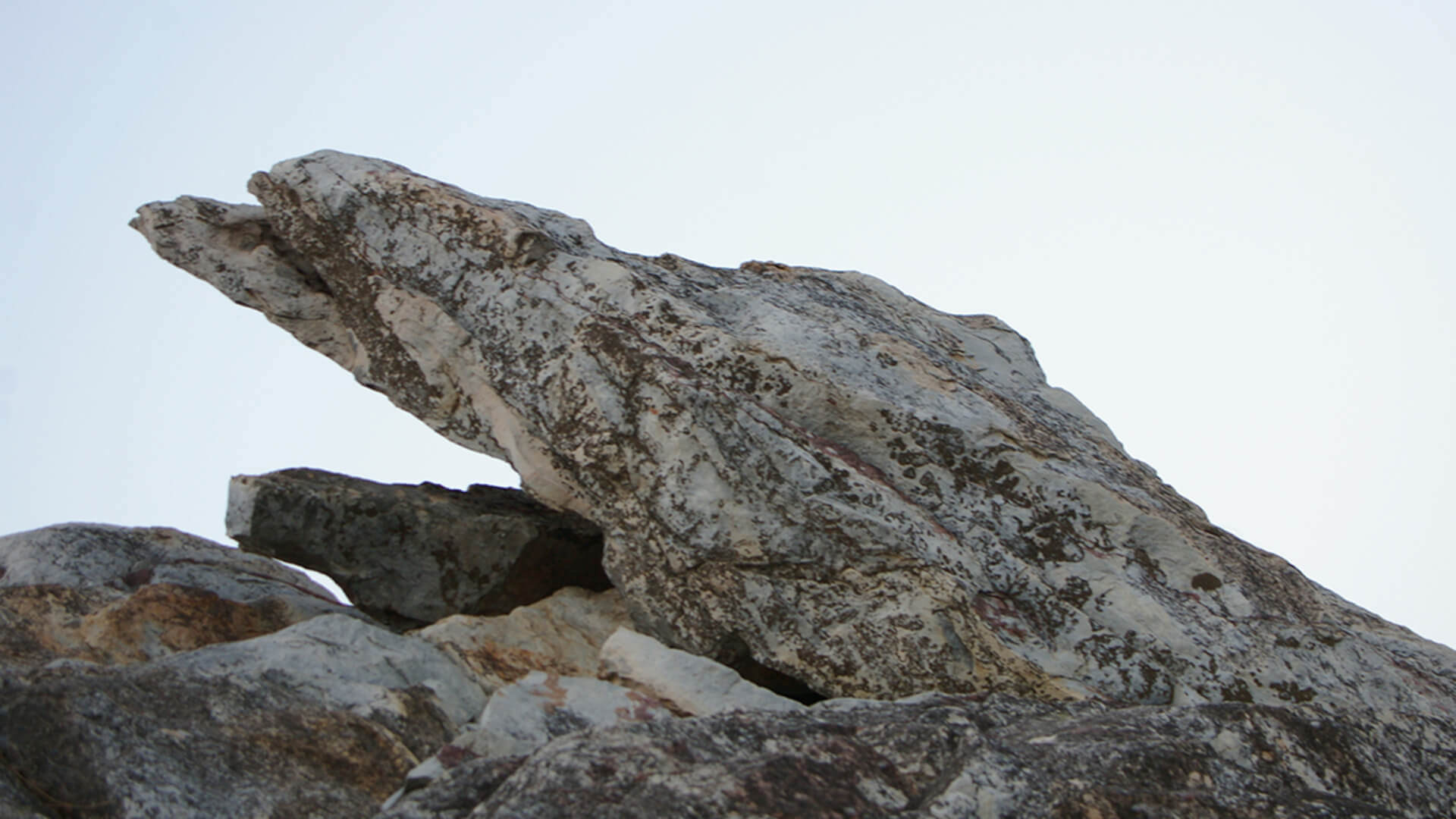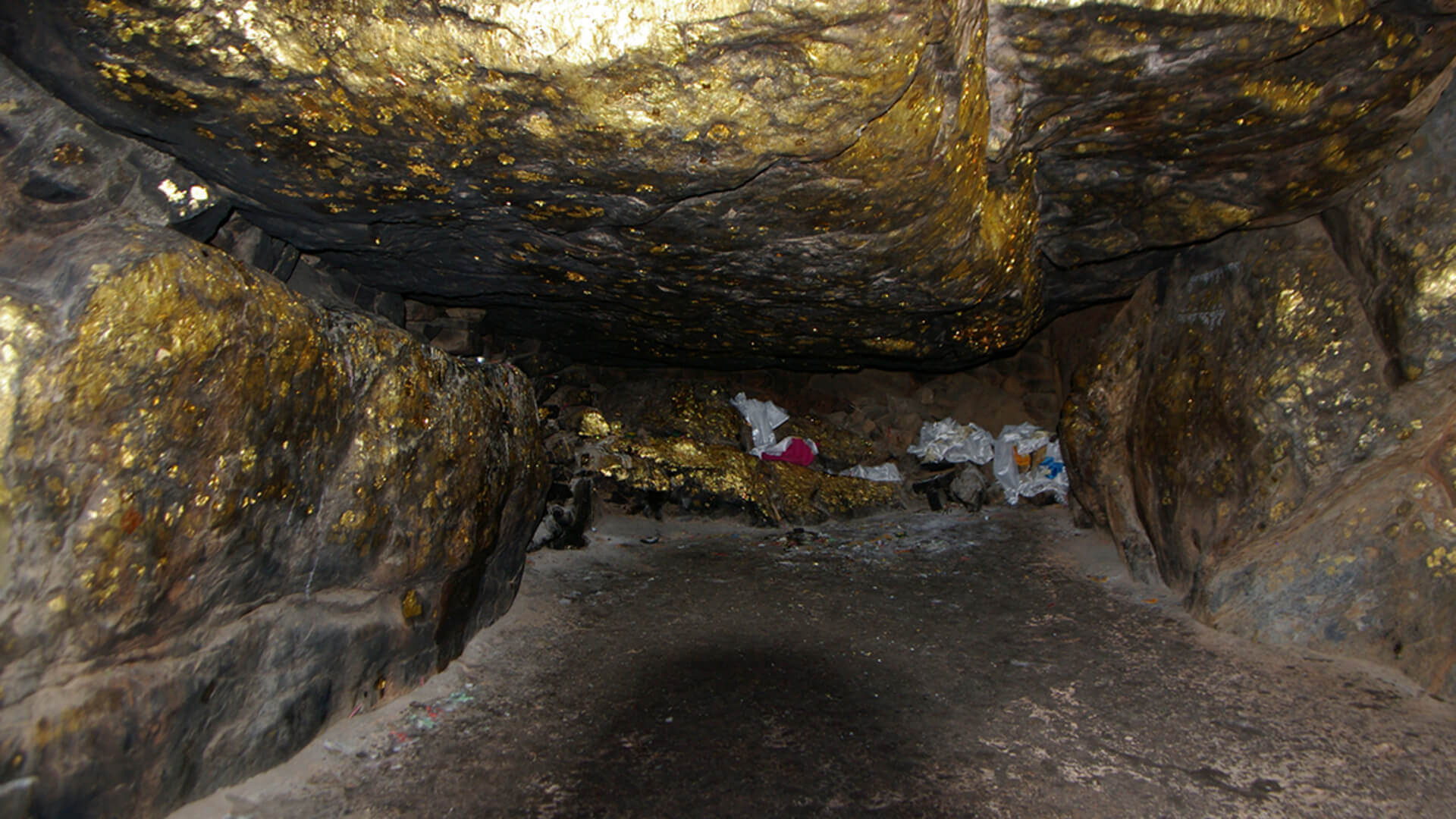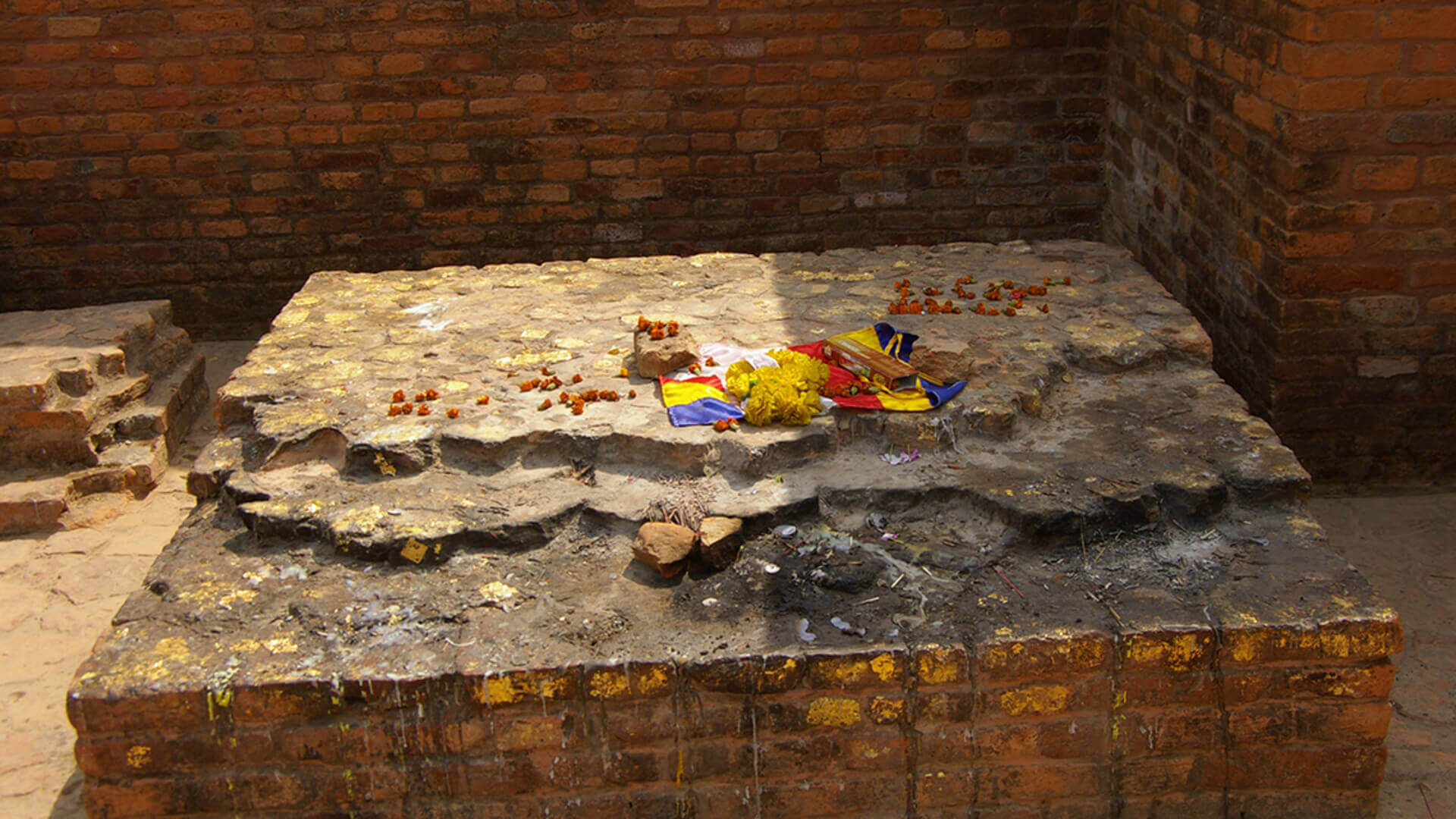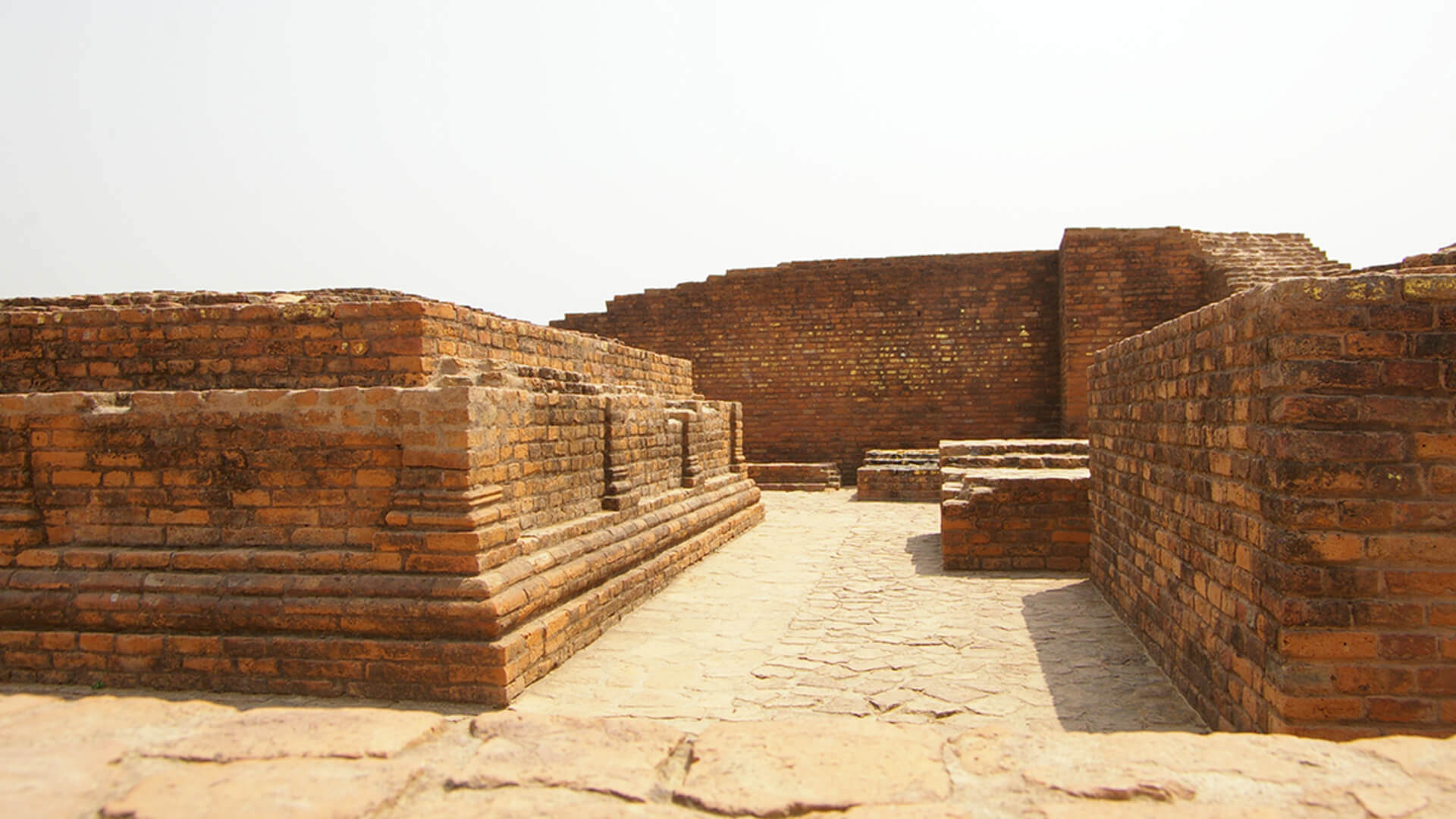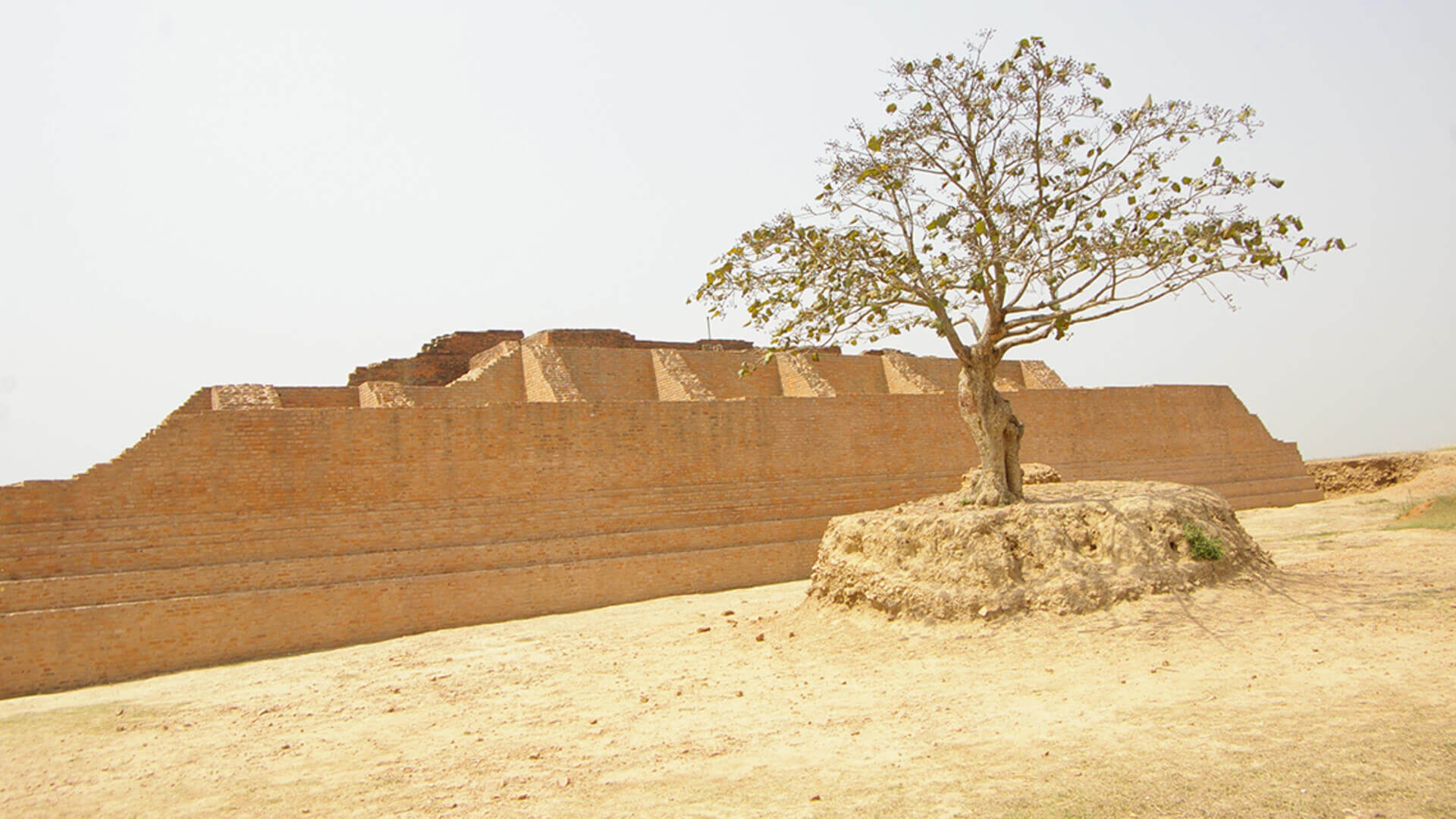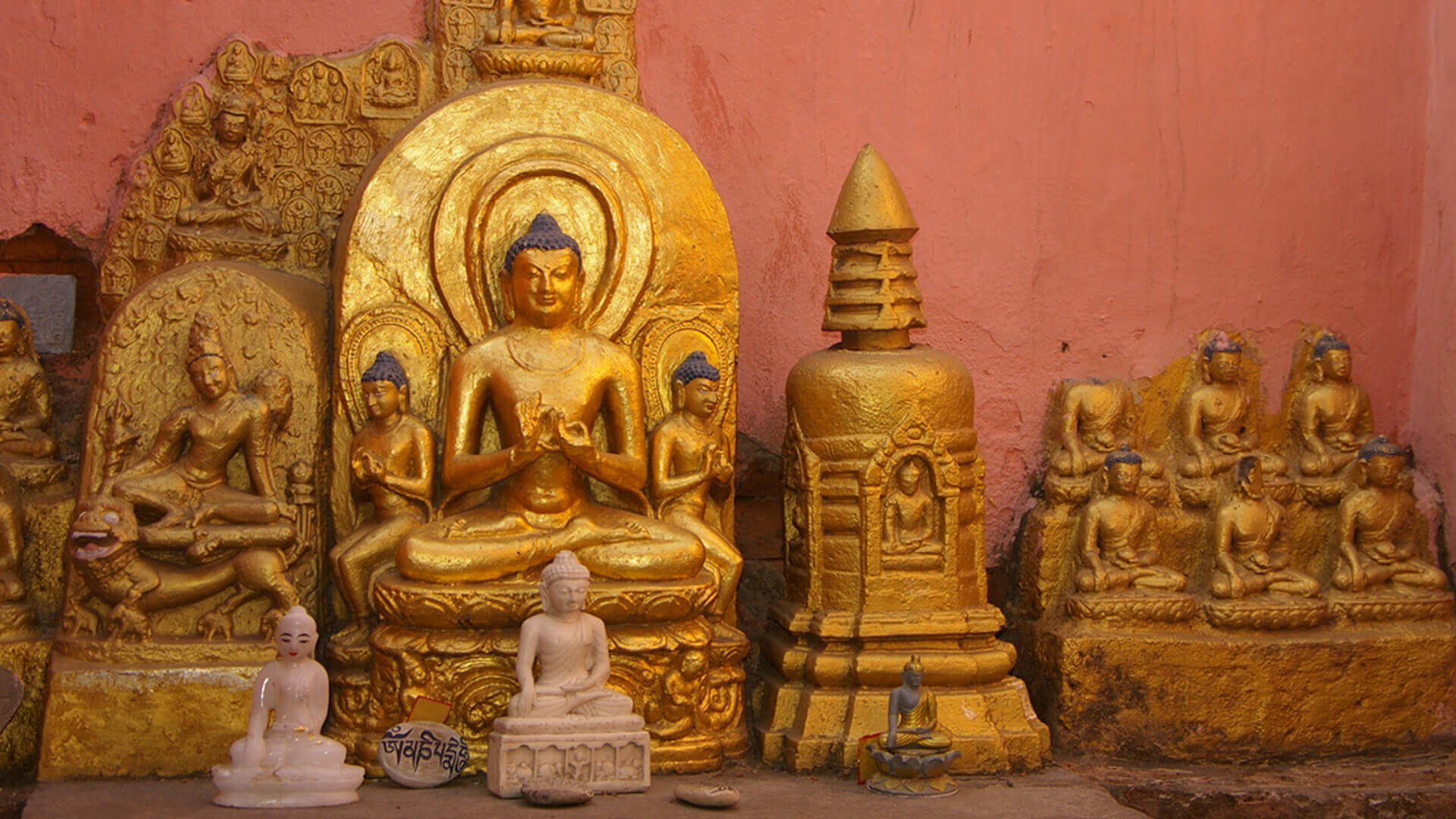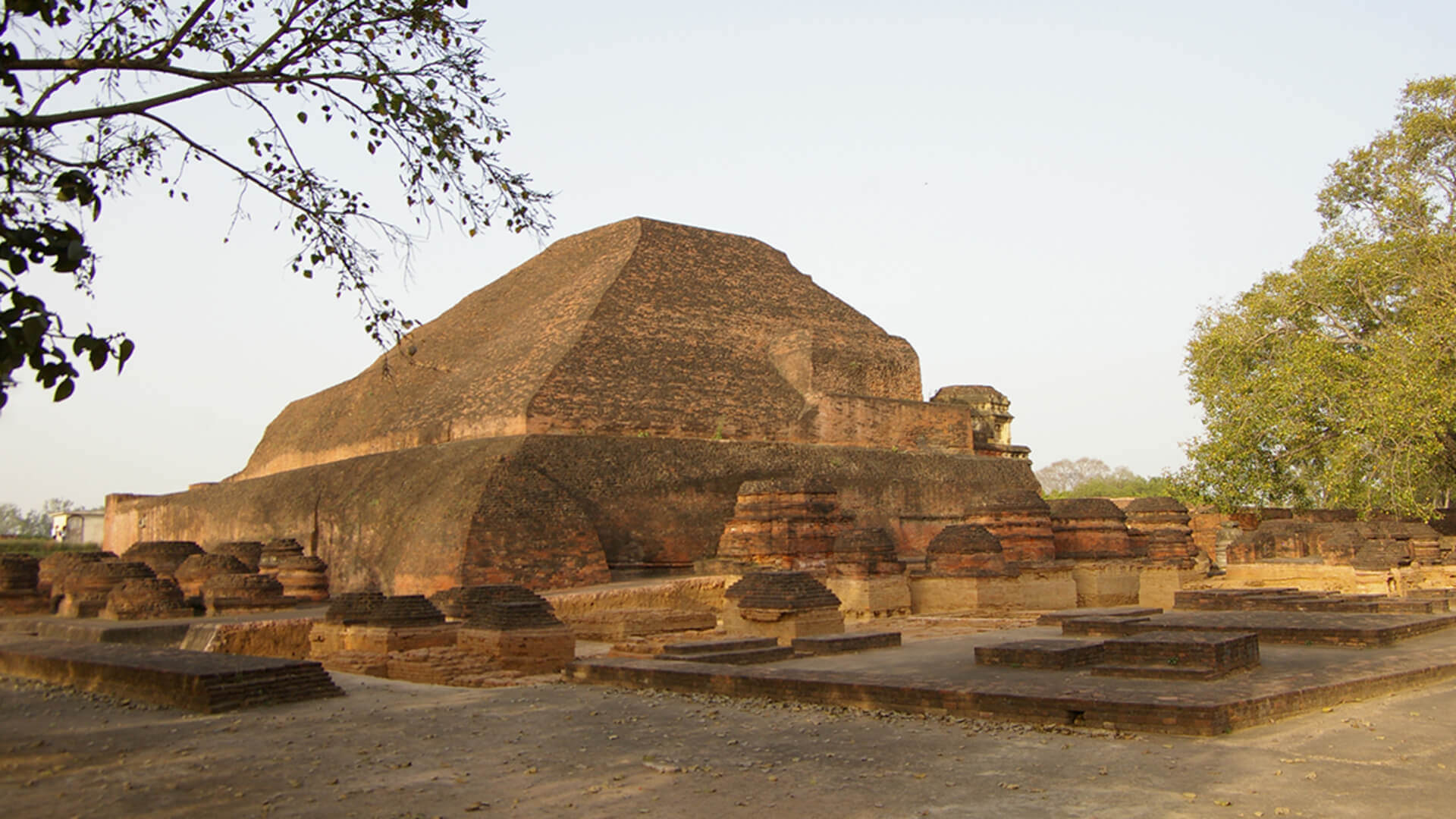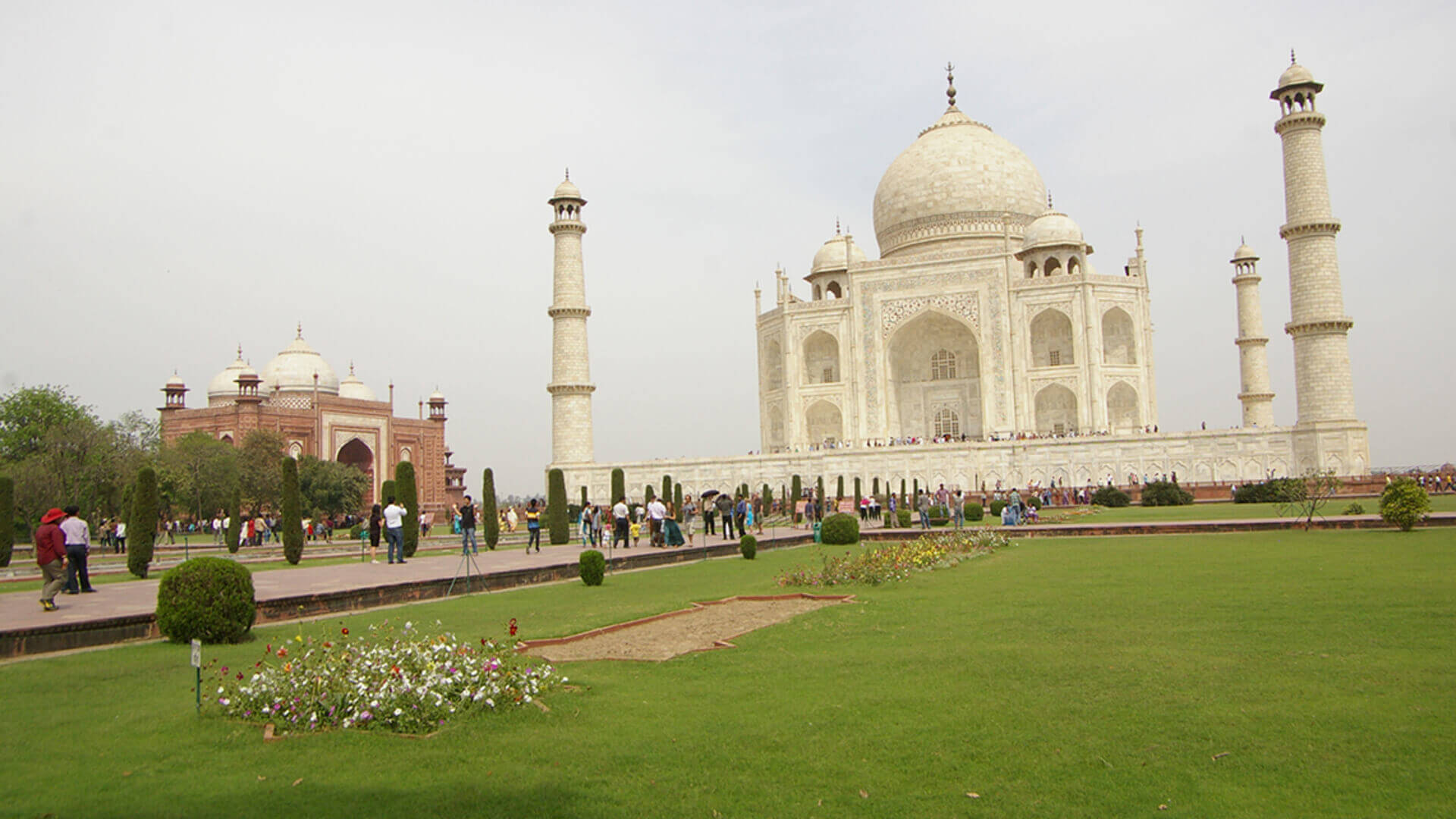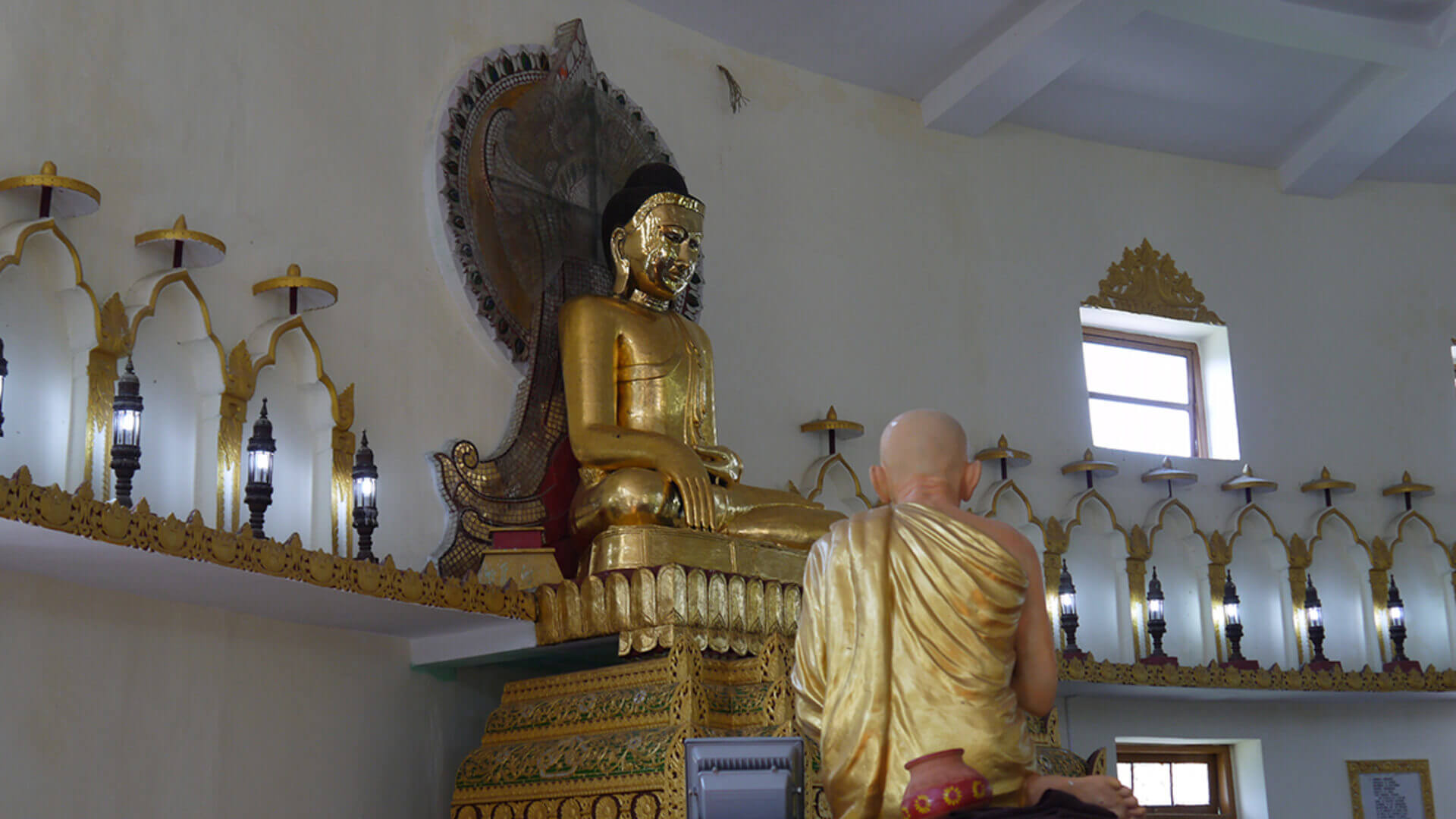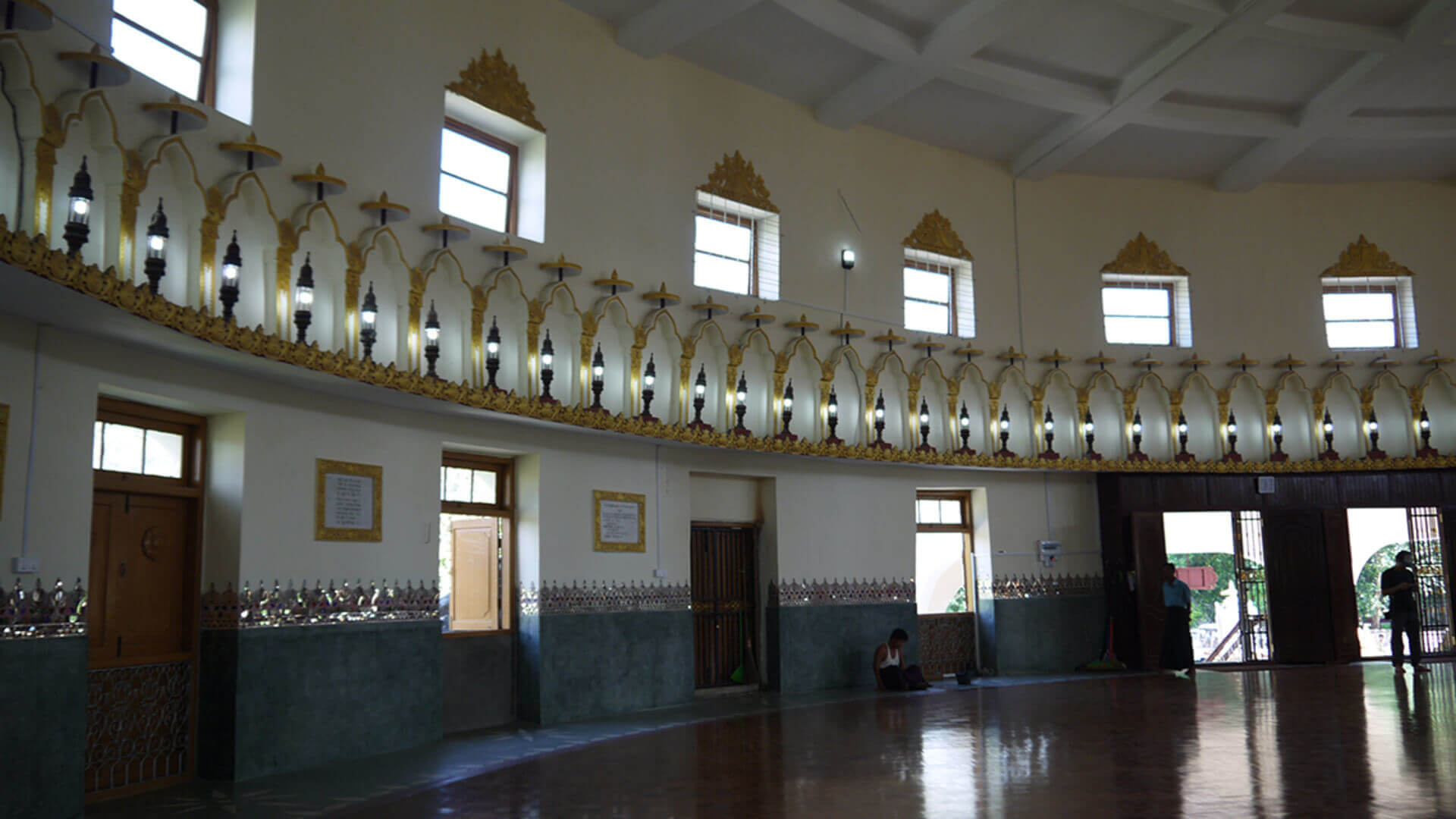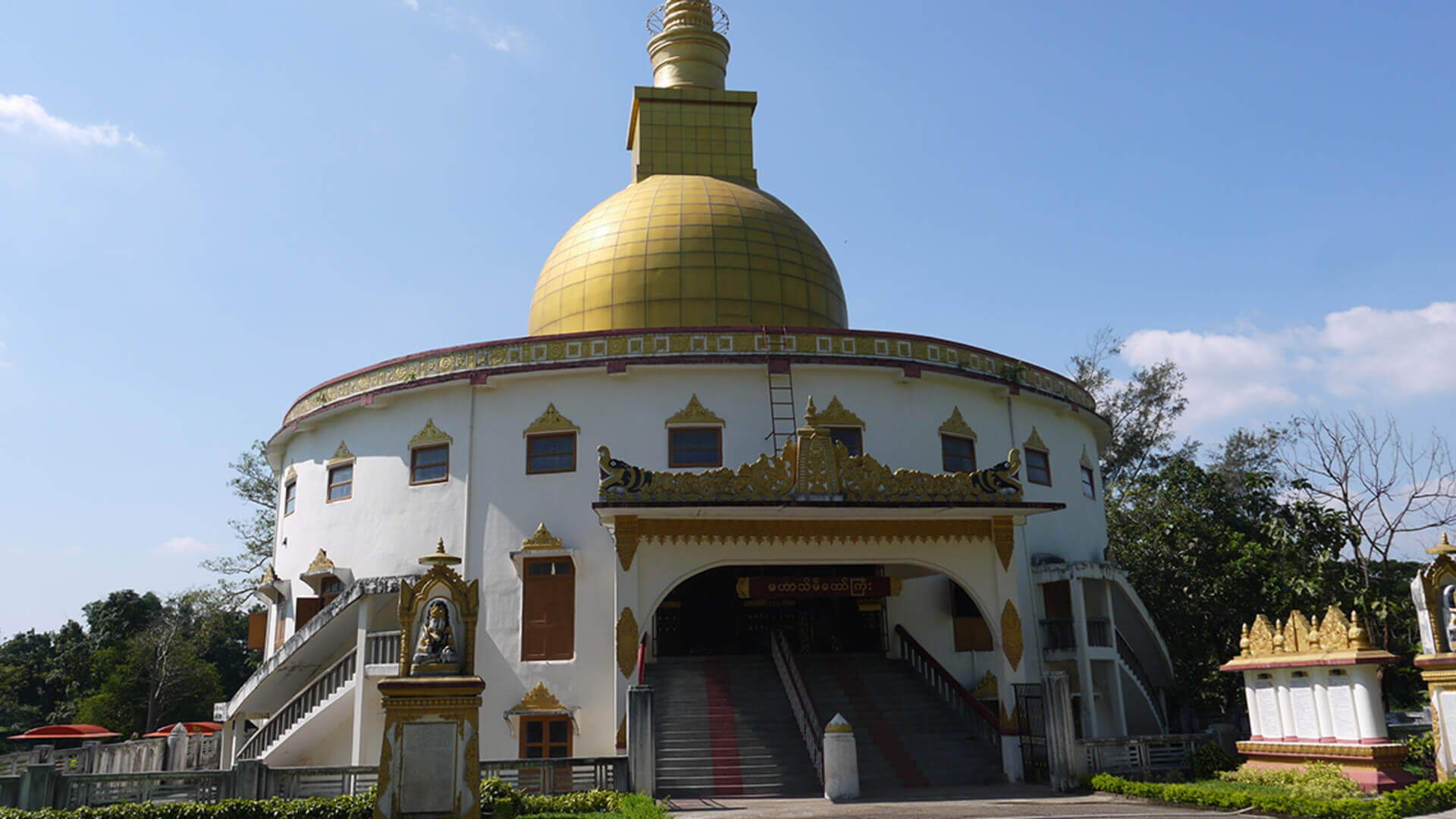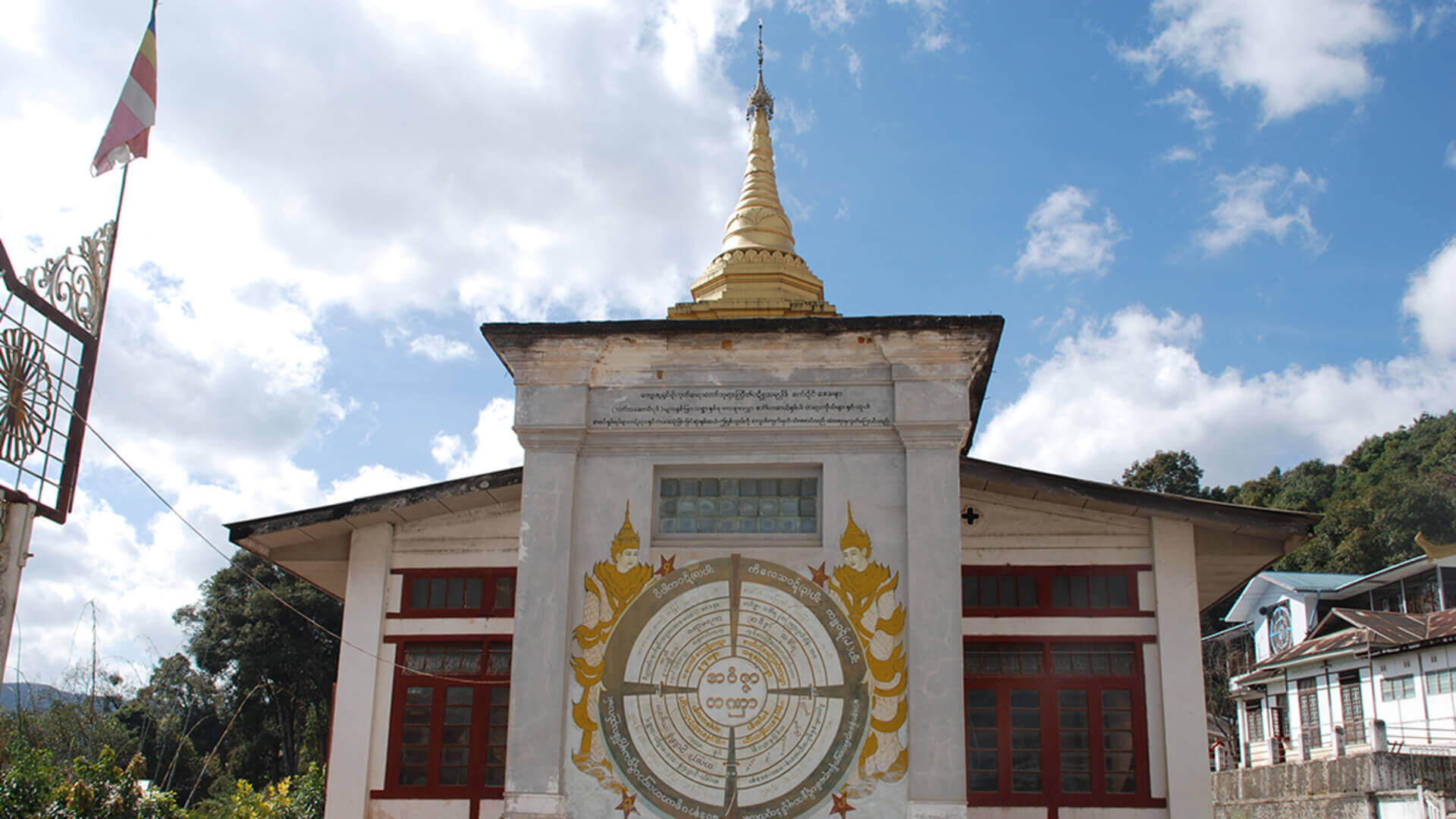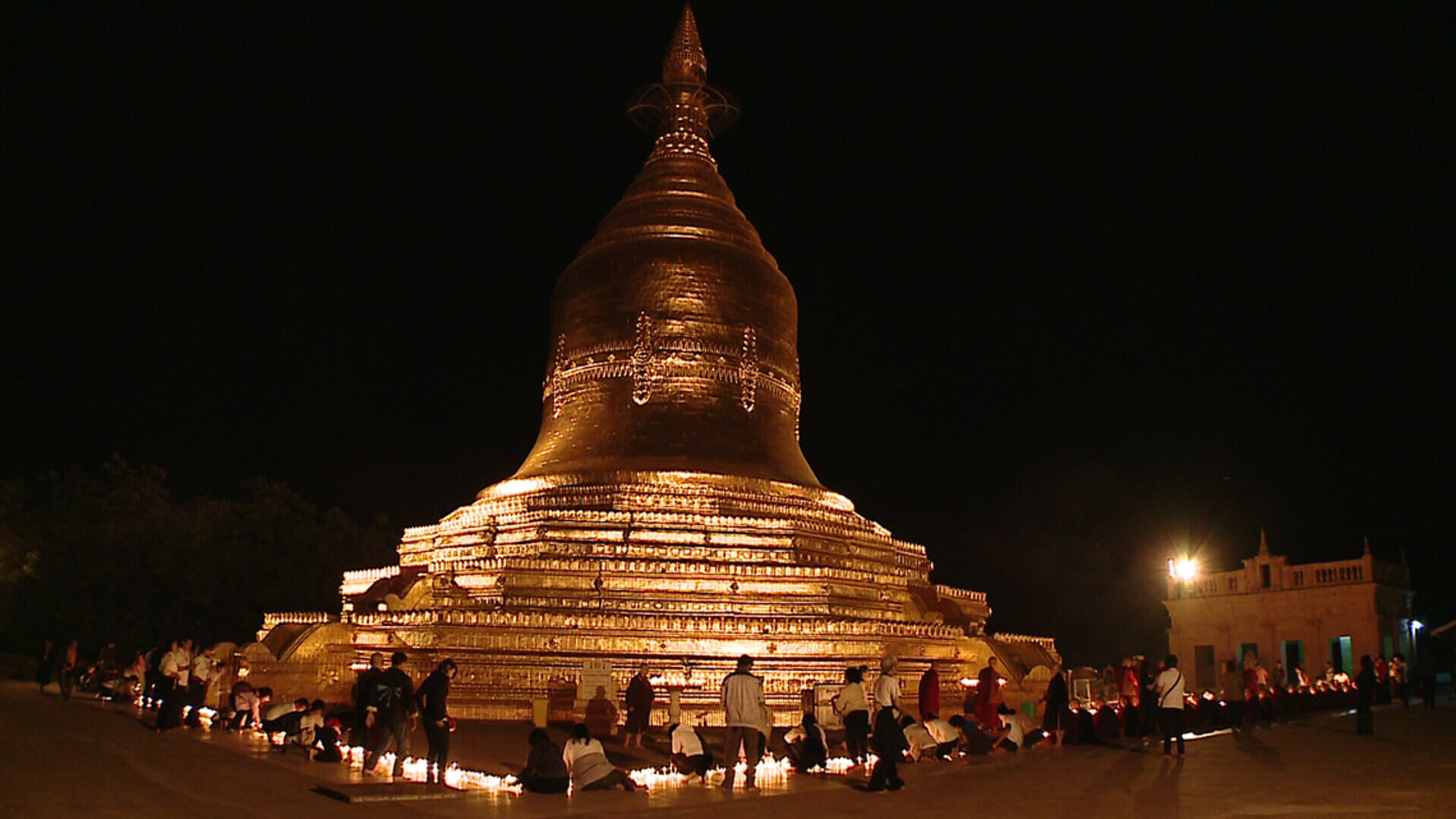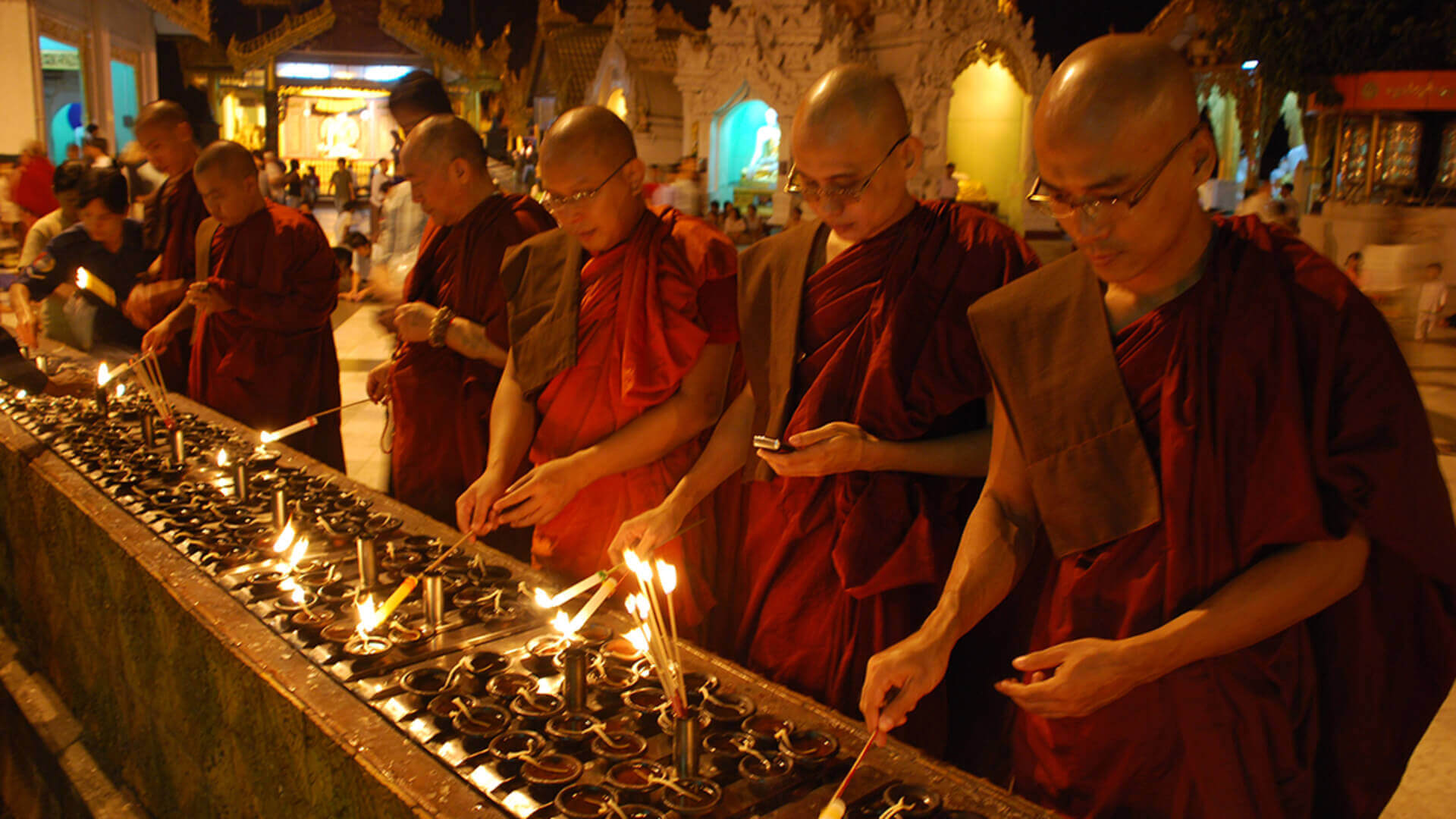"Compassion and Chan" has been the unwavering style and flair of the Ling Jiou Mountain Buddhist Society (LJM), which owes its origin to a search for one’s true self that provides the basis for this core idea. Through the search for one’s true self, the understanding-turned-appreciation of one’s life can be achieved, and from there, the journey of self-awareness begins.
Awareness is in effect the mind, that drives us in attempts to understand the truth of the universe, but always interrupted by the phenomena surrounding us and the truth forever remains opaque and blurred. The search for one’s true self, therefore, boils down to finding ways for our heart (the mind) to communicate with the spirit (the soul) and retrieve that self-illuminating spirit hidden deep in the innermost of our heart. Once found again, the spirit awakens to turn the heart around to return to the spot where it once was and should be at. This process opens up the unlimited illumination of our life awareness, and that is what Chan practice is for: it allows the dust in our heart to precipitate, turns the blurring to clearness and changes a total mess to pure cleanliness for the illumination to shed light on our transparent true self.
Put succinctly, the ultimate objective of practicing Chan simply equates the search to find ourselves again. Namely, by getting and staying close to the Buddha-Dharma and through the purification of practicing Chan to precipitate the ‘greed, anger, and stupidity’ in all of us, so as to transform and resolve conflicts from within the human heart and finally arrive at a spiritual tranquility. Therefore, Master Hsin Tao thinks highly of the Chan meditation in particular and hopes to teach us how to practise Chan in the straightest way possible.
How do we maintain our inner harmony and peace amidst all the hustles and bustles around us day in and day out, one may ask. Under the guidance of Master Hsin Tao, the LJM Buddhist Society has established LJM Meditation Centers in different parts of the world, with Taiwan as the concentric center going outward, to get the word out about the beauty of Chan. There are basically two types of Chan practice, namely one in motion versus the other that is motionless. Meditation can be practiced while seated or walking, or even laid down - meaning, whichever way that suits you. Don’t forget that ‘Chan’ is ubiquitously there at any given time!
As a Dharma Master in the Chan domain, Master Hsin Tao is at the same time widely and professionally recognized as a rare heir to the legacy of all three major traditions of Buddhism: Theravada, Mahayana, and Vajrayana - which perfectly legitimizes his unchallenged Triyana standing highly esteemed the world over. And from such a unique position, Master Hsin Tao has since long highlighted the viewpoint that Buddhism is more than a religion that redeems the heart and the soul, and it warrants an abode of tranquility for our heart and soul in our everyday life.
Against the above background, it makes sense that teachings for the ‘One-Minute Chan’ and ‘Nine-Minute Chan’ suitable for individuals would expand to the magnitude of a global campaign that focuses on peace. And that the LJM pilgrimage has been born out of an affinity of, and a closeness to, the Buddha and into journeys to pay homage to places and sites sacred to Buddhism. Chan is one of the Buddhist traditions, but one that is best suited to help secure a peaceful mind and stay away from disorder and violence. The practice of Chan, therefore, does more than allow people to co-exist harmoniously. A peaceful state of mind enables people to hear the sound of nature that has not been heard for the longest time: the sound that resonates inward and points to the way of tranquility for the heart to return to its original spot. That sums up why Master Hsin Tao always says that ‘when the heart is at peace, the world is at peace.’
“The Spiritual Awakening” is a program with a twin-theme titled “The Pilgrimage” and “The Peace Meditation” respectively. It shares footage that records how Master Hsin Tao has been leading the LJM on mission journeys to different parts of the world. The episode captioned “Pilgrimage the LJM Style”, for instance, offers a unique experience with a Buddhist country, where our lenses zoomed in on all things holy - saints, sacred objects, holy places and miracles. In parallel, from a personal encounter with “The Peace Meditation”, the story grows into the dimensions of “A Global Peace Movement” and the series invites you to join us on a journey for “The Spiritual Awakening” for a peek at a peaceful heart and a peaceful world.
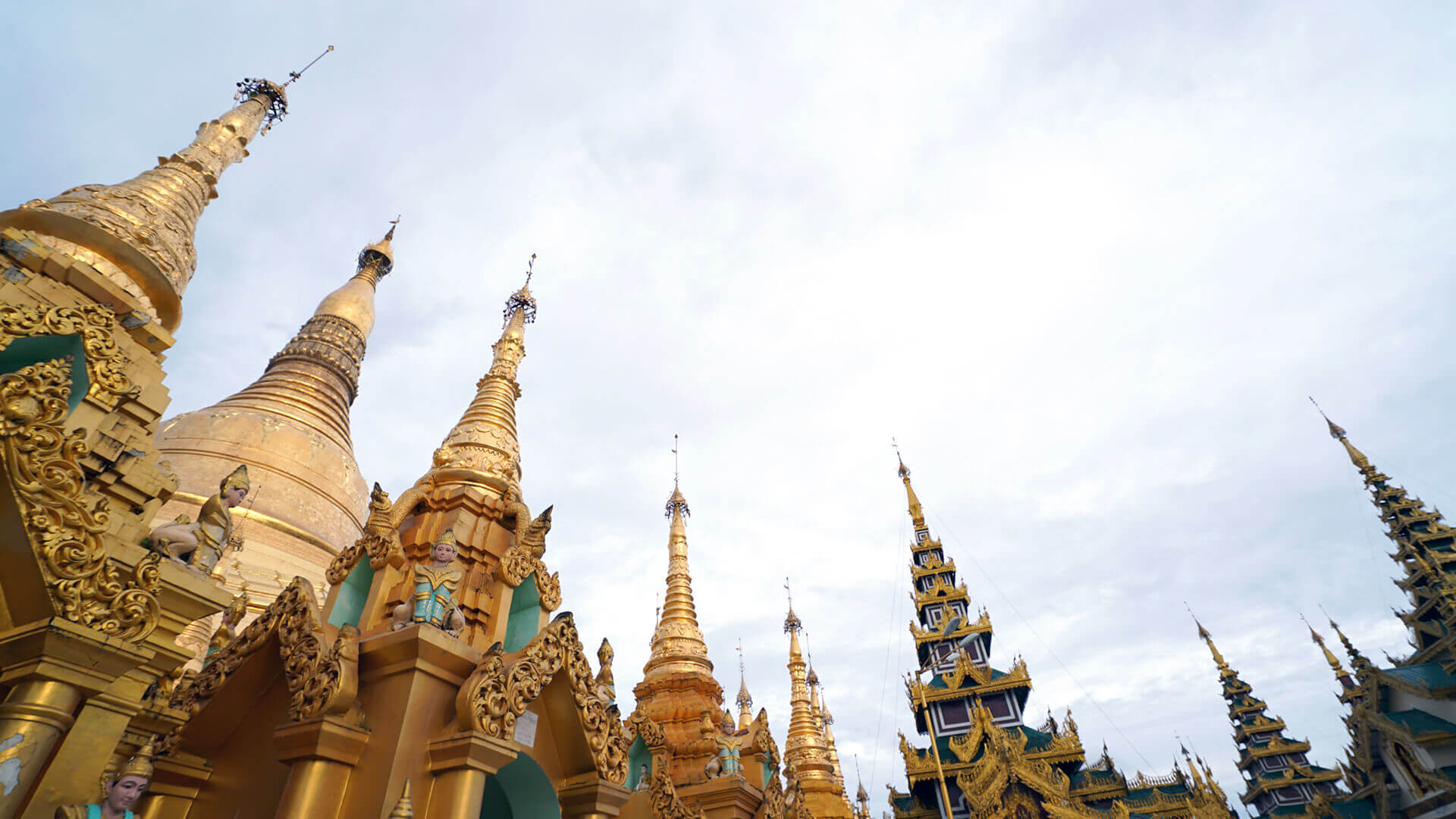
Pilgrimage the LJM Style
Pilgrimage is to follow the footsteps of the Holy Ones and take their examples for our guidepost and model for life. It is to follow the path the Holy Ones took to achieve enlightenment. By going on a pilgrimage to pay homage to sacred places and holy grounds, where miracles took place and holy artifacts were left behind for worshipping and admiration, we track the traces backward in time and feel immersed in the Buddha’s aura exemplified by the four grand bodhisattvas in their respective greatness of Compassion, Wisdom, Vows, and Deeds. At the same time and by paying respect, we are given the chance to re-live what those practitioners before us lived through and enjoy moments of basking in supreme blessings.
The Buddha-Dharma is profound in depths and far-reaching in widths, and a pilgrimage helps facilitate the learning curve for anyone studying the sutras by affording the best possible settings for deep reflections on the meaning and value of life. The ultimate realization is that the Buddha’s teachings relate directly to people’s lives, and our life is closely bound to the Buddha-Dharma. When we follow the historic traces on slow pace and take in the landscape along the way while paying tribute to all things holy ranging from places over people to artifacts, we not only feel a closeness to the Buddha’s four examplary greatness in Compassion, Wisdom, Vows, and Deeds, we literally re-experience what those practitioners before us went through in a shared longing for an unsurpassed blessing by the Holy Ones, Holy Places, and Holy Artifacts. Such are journeys of pilgrimage for Buddhist children.
Legend has it that the tradition of pilgrimage for paying tribute to places where sightings of miracles performed by Buddhas, Bodhisattvas, and Grand Masters had been reported was already rather established in ancient India. It was every Buddhist practitioner’s aspiration for life to go on a pilgrim’s journey. Group visits by pilgrims organized by the LJM have become a popular offering of theme travel over the years with strong word of mouth. Packaged tours with a unique itinerary to feature specific attractions such as going to India and Nepal for life stories of the Buddha, or a theme tour to Myanmar as ‘the Buddha’s Land on Earth’ in the Theravada tradition, or an in-depth visit to Nepal to better understand Vajrayana, these are but a few examples of “Pilgrimage the LJM Style” and travelers can take advantage of the carefully arranged routes for a gratifying experience. One can even opt to join tours that coincide with major events such as those pecked to “Alms Offering to Support Thousand/Ten Thousand Monks” for Myanmar. Arhans are said to have made their presence felt to give blessings to those on hand and on site.
You are cordially welcomed to join us and share the process of a pilgrimage the LJM style: calm the heart, pay respect, offer support, worship, the ritual walk, and the Chan meditation. With Ven. Chan Master Hsin Tao in the lead, the process of a pilgrimage the LJM style can be compared to an intensive course of the Buddha-Dharma study that cleanses our life.
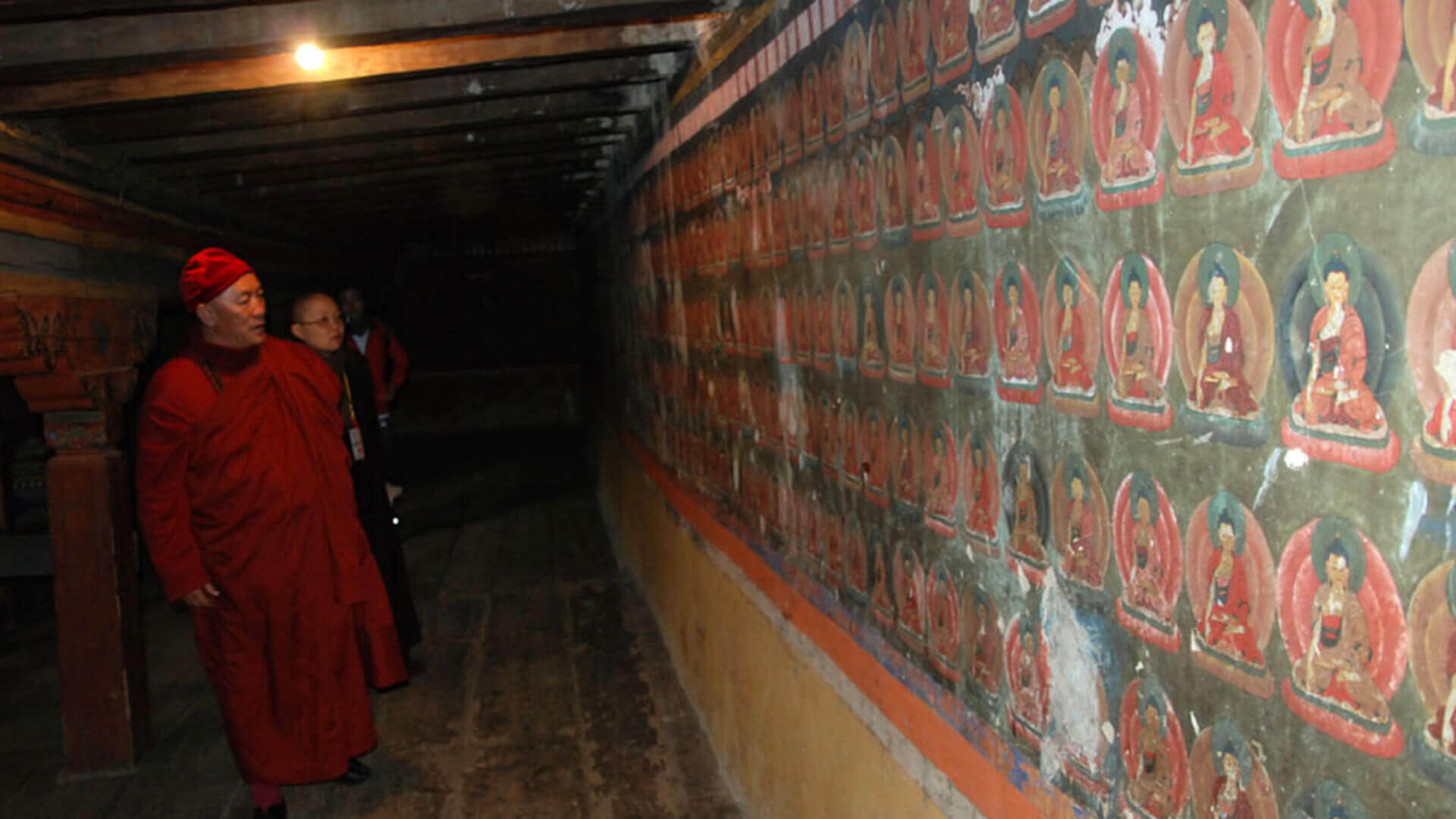
The Pilgrimage to Bhutan Series
Master Hsin Tao once said that to witness the Dharma in places designated sacred or even holy also affords us the opportunity to become aware of how they succeeded in their studies of the Buddha’s teaching, as well as for us to learn from such norms and models of success. Partly because of that, Master Hsin Tao led his disciples from different countries and flew to Bhutan in April 2013, for a journey of pilgrimage that yielded a string of bliss and joy of the Dharma.
Hailed as the world’s happiness country, this Shangri-La at the foot of the Himalayas and probably one last piece of Pure Land on Earth, the Kingdom of Bhutan can be said as the place where Buddhist culture of the Tibetan Buddhism tradition is best reserved. The name Bhutan originally means ‘Border of Tibet’ and Buddhism has connected the Himalayas by flourishing in the mountain range’s North (Tibet) and South (Bhutan). When Buddhism started to take rooting in Bhutan in the 8th century, the Bumthang king in eastern Bhutan requested to have the Padmasambhava over to tame the local devil and convert it to Buddhism. Thus was Padmasambhava’s initial visit to Bhutan.
During our pilgrimage we stopped to visit the famous Paro Taktsang (Tiger’s Nest Temple) that is most representative of monasteries in Bhutan. The journey of pilgrimage to and in Bhutan ought to keep up the happy mood in line with the host country known for its happiness, and we the travelers quieted ourselves down to optimize our group meditation, as well as our participation in Buddhist rituals along the way. We were blessed to sense that silence is indeed conducive for wisdom to emerge under the additional power of the Dharma of Vajrayana.
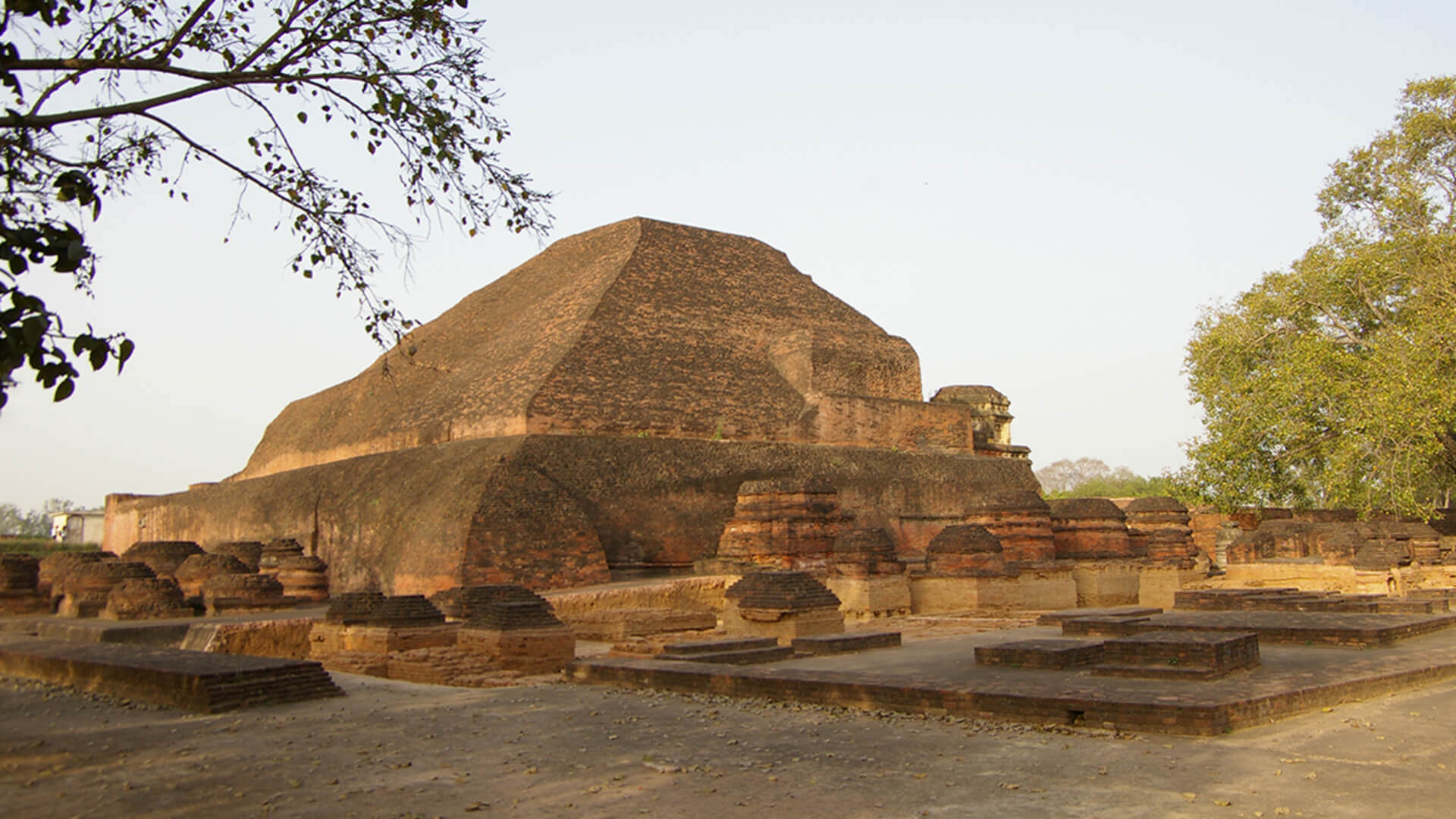
The Pilgrimage to India Series
There is nothing more fair than death. Once we are born, we go through life connected to aging, getting sick, and dying, and that is the fact of everyday life for sentient beings. To learn from the Buddha’s teachings is to follow his life journey in rising above life and death, in ridding ourselves of woes and worries, and in escaping the cyclic reincarnation. Thus aspired, we embark on the journey of pilgrimage to pay a personal visit to the place where the Buddha achieved enlightenment - the Maha-BodhiTemple - in the hope of making the witness of the Buddha’s journey a personal experience.
Bodhgaya is located in the Province of Bihar, India. A poet and philosopher once referred to the Vajrasana - the diamond-shaped seat under the Bodhi Tree - as the Belly Button of the Earth, meaning the center of the world, to suggest that the Buddha’s teachings guide people to escape born ignorance and reach for the illumination and wisdom yonder ashore. Master Hsin Tao has often been quoted as saying that Chan is the heart, and the Great Compassion is the deed, and the Avatamsaka is an opener for our mind’s eye.
Our pilgrimage started from the birthplace of the Buddha, and traced his path of ascetic practice to witness many sufferings along the way. Upon arriving our destination at the Bodhi Tree where the Buddha attained enlightenment, we the followers began our Chan meditation in sitting, in our humble attempt at what the Buddha finally figured out that would help us advance in our meditative practice.
The LJM Pilgrimage to India in 2012 was led by Master Hsin Tao in person to unfold a journey in the footprint of the Enlightened One two-and-a-half millennia before our time. Welcoming greetings were extended to the LJM delegation by Taiwan’s de facto embassy to India, and the world-famous spiritual leader Guruji-Sri Sri Ravi Shankar as well. Travelers from afar were cheered on and blessings given at heart-warming receptions.
The world-famous spiritual leader of Ayurveda from India, the honorable Guruji-Sri Sri Ravi Shankar, and Master Hsin Tao first met at the 1999 World Conference of Religions at Cape Town, South Africa. Deeply touched by Master Hsin Tao’s gusto in building the world’s 1st-ever museum of religions and his dedication to interfaith interflow and dialogues, Sri Sri Ravi Shankar highly praised Master Hsin Tao’s compassion and a lasting friendship began. Master Hsin Tao has been invited numerous times to take an active part in international religious events organized by Sri Sri Ravi Shankar.
The two modern-day saints do indeed share many ideals and objectives in common. Sri Sri Ravi Shankar takes proactive approaches in solving problems of poverty and has earned a global position with his efforts in ‘The Art of Living’. Master Hsin Tao, on the other hand, promotes to purify our heart and mind, and to embed meditative practice in our daily life. Both masters spare no efforts in advocating respect for life and world peace, and by so doing they display mutual understanding and appreciation while joining forces in pushing ahead in their lifelong calling and devotion.
